|
What’s that old adage? Something about the contrast between offense and defense?
“Offense wins games, defense wins championships.” The Western Conference Semifinals series between the Houston Rockets and Utah Jazz will test that theory. Houston, boasting the league’s best record, highest-rated offense and second-most points per game in the regular season, are geared to face perhaps the premier defensive group in the league, anchored by dominant rim protector Rudy Gobert. We finally get to see a contrast of styles, a huge contrast in pace and perhaps the two most impactful players on each side of the floor. Houston’s eyes have been on Golden State since last June, when the Rockets traded for Chris Paul and begun to assemble a superteam of their own. Winning 65 games and securing home-court advantage throughout the playoffs was a wonderful step for the franchise, though for many it’s just another notch in the belt. Golden State is just one series away now, a showdown for the ages that many see as the de facto championship series. D’Antoni, MVP front runner James Harden and perennial playoff disappearing-act Chris Paul better not look too far ahead.
0 Comments
As the eyes of many NBA fans shift towards the postseason, some front office executives are thinking about how they can improve the fates of their franchises that are not currently vying for postseason play. The pre-draft process is filled with tons of scouting, evaluation periods, internal discussion and workouts for some of the hopeful rookies that want a spot in the NBA. Taking the drafting needs and picks into consideration, financial considerations can paint the biggest picture to what decisions will be made beyond the draft. Trading some players, utilizing cap space for taking on others, and preparing for free agency all are highly informed by the team's salary situations – after all, the NBA is a business. Here are three teams that missed the postseason from the Southeast Division and what it might take for them to ascend in a division where the Wizards are faltering and the Heat are subject to change. All three teams are looking for new head coaches and have the chance to start looking very different beginning next season, so I'll exclude the head coaching search from each team's dialogue: Atlanta Hawks 2017-18 Record: 24-48 2018 Draft Picks: 4th*, 19th (from MIN), 30th (from HOU), 33rd Restricted Free Agents: G Malcolm Delaney, G Damion Lee Unrestricted Free Agents: none Other Players of Note: C Dewayne Dedmon ($6.3m player option), C Mike Muscala ($5m player option), PG Isaiah Taylor (non-guaranteed contract), F Tyler Cavanaugh (non-guaranteed contract) Committed Salary: $69,173,679 Cap Space: $31.8 million The Hawks are bottoming out right now, with General Manager Travis Schlenk trying to salvage what was there when he took over and turn it into pieces worth building around. Two of the brighter young pieces in Atlanta - Dewayne Dedmon and Mike Muscala - could opt out if they sense that the Hawks are going to take a franchise-changing center. With four picks in the top-33 of the draft and cap space to leverage for future assets, we're at the beginning of seeing a complete metamorphosis of this roster. Order of Operations 1. Clear Space for someone else with the Dwight Howard trade exception As a rebuilding team, Atlanta needs to use every single resource at their disposal to add future draft picks and young players. With cap space at their disposal, the Hawks cannot let the $4.34 million trade exception from Howard go to waste. It expires on June 20th, a few days before the draft, but the Hawks should be able to swing a trade where they absorb some unwanted salary and get a second-round pick for their troubles. Nene from Houston comes to mind. Another more-likely scenario is that they take on a multi-year contract for cash considerations, taking back a young player worth giving a trial to. That could be a Damian Jones from Golden State, a Malachi Richardson from Toronto, or a CJ Williams from the Clippers. There's no 100 percent guarantee the Hawks can swing a deal like this, but the exception would be a nifty trick. 2. Ayton, Doncic, or Bamba, please There's a pretty clear top-three in this draft in my opinion: DeAndre Ayton, Mohammed Bamba and Luka Doncic. All three could play right away in their rotation and would be superstars over the long-term in Atlanta. Atlanta could need to get popped into the top-three of the lottery if they crave Ayton or Doncic, but a guy like Bamba could slide down to them if they're in the top six. Atlanta doesn't need to swing for the fences on a center, so if they don't love the guys that are left on the board when they're up, they could move down or take a guy like Michael Porter. I've never fancied myself a huge fan of Jaren Jackson, but he's also a trendy pick for big men if the Hawks choose to go there. With four picks in the top 33 and three first-rounders, Atlanta can add a plethora of young talent. There are gems waiting to be poached no matter where they're drafted, and thanks to the versatility of guys like John Collins and Taurean Prince, they have no real needs or positions that limit who they can take. These Hawks are a blank canvas. 3. Use cap space via trade, not via free agency With that many draft picks and only a few roster spots, the Hawks will have a large amount of cap space with likely only one or two places to keep players. Instead of trying to pay $17 million a year for a free agent and trying to win games now, they could trade for an overpaid player, absorb his contract and take a first-round pick for their troubles. Since the Hawks aren't trying to compete for a championship immediately, that might be the best course of action... and there are plenty of candidates with which to shop. Many organizations are in need of cap space and want to make a splash this summer, and the Hawks have a fairly slim market in their command at the moment. The San Antonio Spurs with Pau Gasol, the New York Knicks with Joakim Noah, or even the Los Angeles Lakers and Luol Deng. None of these players are attractive in their own right, but if the Hawks want to add more draft picks and more chances at getting foundational youngsters, this might be their best path to doing so. 4. Fill out the rest of the roster with intriguing young pieces Atlanta can easily spin their poor overall talent and roster to agents looking for young guys on "prove-it" contracts. Atlanta can take retreads or Euro guys that never got a shot in the league, play them to maximize their value, and then either reap the rewards with a long-term deal down the line or flip them for more picks or value down the line. There are a lot of players like this on the market, and once we get a better feel for what positional needs the roster has after the draft, the easier it will be to forecast which types of targets the Hawks have on their radar. 5. Reinforce the key young players However the Hawks finagle their useful cap space or contort their roster this summer, they'll have a few really intriguing young pieces: a top-five pick from the draft, John Collins, Taurean Prince and Dennis Schroder, all of whom are under 24 and signed for less than a combined $35 million per year. The front office needs to reinvest in this group by surrounding them with a coach that can leverage their strengths and develop them together, role players that make sense within that structure and veterans that won't pout or distract from the vision. All of this can be summed up in one key word: culture. The organizational culture needs to be a strength of the Hawks if they are to make it out of this rebuild with a rock-solid core. They lack the top-tiered stars that others embarking on rebuilds might have, and if they're to shorten their stay at the bottom a focus on culture must prevail. Charlotte Hornets 2017-18 Record: 36-46 2018 Draft Picks: 11th*, 55th (from CLE) Restricted Free Agents: G/F Treveon Graham Unrestricted Free Agents: PG Michael Carter-Williams, PG Julyan Stone Other Players of Note: none Committed Salary: $117,922,202 Room before luxury tax: $6 million New GM Mitch Kupchak certainly has his work cut out for him... The Hornets GM inherits a team without a coach, no playoff projections and one of the largest payrolls in the league for next season. They also have the 11th pick in the draft as a means for upside, and last year's first-rounder, Malik Monk, that many still believe will be an impact scorer in this league. As the Hornets butt their heads up against the luxury tax, they're faced with a difficult reality: how can they tear down their costs, and what players do they move on from? Order of Operations 1. Decide internally on Kemba Walker It's pretty much clear cut that of all the veterans and eight-figure players on their roster, none commands the value in the trade market like Kemba Walker. As was discussed throughout the regular season under the old regime, is now the time to trade Walker and use the All-Star to entice another suitor to take on a poor contract like Nic Batum? Or should they pursue other trades, keep Walker and build around him after giving him a huge pay raise in 2019? That is question number one for Kupchak to answer with this roster. Paying Kemba next summer (he is extension-eligible this summer but would likely decline any offer) doesn't provide much of a release from the bloated salary they're dealing with now, and also illuminates little path to being competitive while Kemba is in his prime. However, dealing him now doesn't make anything clearer, and perhaps the Hornets wouldn't be poor enough to bottom-out and get themselves a top pick, sentencing themselves to NBA purgatory like the Sacramento Kings after they dealt Chris Webber. Both paths are questionably rocky and have clear downsides, but either way the Hornets should probably set their sights on a decision within the next month or two and stick to it. Why should it be so important for them to decide before the draft? 2. Their heir apparent could be there at 11 Looking at the players that could be there just outside the top-ten, a couple of playmaking point guards come to mind. Collin Sexton of Alabama and Shai Gilgeous-Alexander from Kentucky are likely available, and even Trae Young could plummet based on his defense. Having a shot at grabbing one of these guys would certainly make it more palatable to deal Cardiac Kemba now, unload another big salary and then start over with a backcourt of two young guards, pitting the eleventh pick with Malik Monk. Of course the Hornets don't need to pick a point guard there, even if one of the higher-end guys is available. Their roster has starters at every position for next season, so they have the luxury of taking the best player available. But fear not, Hornets fans... you can still make a big splash this year and part from Kemba. 3. Luxury tax concerns The Hornets could find themselves in the luxury tax next year for the first time in franchise history. With only $6 million in space and the 11th pick projected to cost them $3.3 million, and with three other roster spots needing to be filled it's impossible for them to do so and duck the tax. The only way they circumvent luxury tax concerns would be to shed salary via trade. Kupchak's organizational imperative from a talent standpoint revolves around Kemba and the draft pick, and talent rules the day for a small market organization. But they are capped out and have to make some difficult decisions with costs this summer, either living with what they have and swallowing their tax bill or shedding money and taking a low return as a result. 4. Shop the veterans Every single player should be shopped around by the new front office to find the best deal for the organization. In particular, veterans like Marvin Williams and Michael Kidd-Gilchrist, who have defined strengths and could bring legitimate value elsewhere, would be two targets for others around the league. Perhaps the most sensible name though is that of Jeremy Lamb, who far outperformed expectations this past season and is on an expiring contract. Cashing out on Lamb now, and handing the reigns of the 2-guard spot to Monk, would allow Charlotte to shed salary and get a good haul at the same time. Deals like that are the ones the Hornets need... even if they don't make them more competitive immediately. 5. Add youth and shooting to round out the bench If there's one thing Charlotte's roster needs, it's a little dose of shooting and some young players with considerable upside. Those types of guys can be found for the minimum this year, and serve many purposes. First off, the Hornets need to evaluate youngsters to move forward with. Second, they need low-cost players (the non-veteran minimum contract should hover around $850k for the entire season), and young shooters on a "prove-it" non-guaranteed deal help avoid tax penalties. Third, if they plan to try and win games next year in Kemba's free agent season, or even if he leaves and Dwight Howard is anchoring the offense, they'll need three-point shooting. Look for Charlotte to add a ton of guys to their Summer League roster and dive deeply into the undrafted free agent market. It's an area where Mitch Kupchak has proven he can make a splash in the past and would be an amazing way for him to start off his tenure. Orlando Magic
2017-18 Record: 25-57 2018 Draft Picks: 5th*, 35th, 41st (from CHA) Restricted Free Agents: F Aaron Gordon Unrestricted Free Agents: F Mario Hezonja, G Arron Afflalo, F/C Mo Speights Other Players of Note: PG Shelvin Mack (non-guaranteed contract), F Khem Birch (non-guaranteed contract), G Rodney Purvis (non-guaranteed contract) Committed Salary: $85,937,139 Cap Space: $14.7 million No team has lost more games in the last six seasons than the Orlando Magic, who have been exercising futility since Dwight Howard's departure. A new front office wraps up their first year, and we still have very little clue as to what their plans are. They've got no starting-caliber point guard on the roster, their best player and athlete is a restricted free agent that's boldly seeking a max contract, and last year's rookie Jonathan Isaac hasn't shown too much beyond potential flashes here and there. With only $14.7 million between them and the cap and Aaron Gordon seeking a max contract, the Magic are in a bit of a difficult place. Once they hire a coach and the lottery gets decided, we could have a much better idea of their plans moving forward. Order of Operations 1. Draft the best player available No team has a more glaring hole than the Magic do at point guard. They dealt Elfrid Payton to Phoenix at the trade deadline, essentially punting on wanting to pay him, and now have only D.J. Augustin on their roster. Orlando really does need a short and long-term solution to their issue at the position, and the draft seems to be the best place to find both. But the draft doesn't just spit out players based on need. In fact, what the Magic need most is a higher caliber of player. If a point guard they like - and one that doesn't fit the organizational identity moving forward - isn't on the board for their pick, they should take just the top guy on their draft board. 2. Cut Shelvin Mack The math is pretty simple here: Shelvin Mack is due to make $6 million next year as a backup point guard. If the Magic waive him by June 29th, that effectively drops to zero. Consequently, Orlando would have around $21 million in cap room to enter free agency with (likely around $16 after their draft pick) and a little more maneuverability to pay guys via trade or free agency. For a team so bare at point guard, cutting one of their backups regardless of who they draft might seem like a strange move. This is 100 percent cap driven though, and the Magic need that space to fulfill their plans elsewhere. 3. Pay Aaron Gordon: agree to the max early, sign it later The Magic are a little backed into a corner. Gordon might be the top RFA on the market, meaning he's the guy that other teams with a multitude of cap space will try to poach first. Gordon might seem a tad ridiculous for seeking a max deal, but he's going to get paid that amount - even in a cap crunch. Instead of letting Gordon shop elsewhere for terms of the deal, Orlando should pony up and offer him the large contract... if not the max, then close to it for five-years. Once Gordon agrees to take himself off the market, Orlando has time to use their cap space and not rush to sign other players before they're forced to sign and match an offer sheet. Once we've established the Magic have around $16 million, it might seem that Aaron Gordon signing a max contract would cause that amount to disappear. But Orlando can agree to terms on the contract and not have him sign it right away. Why? The Magic own his Bird rights, meaning they can re-sign him even if they're over the cap. Instead of signing him July 10th and deleting their cap space, they should agree to terms with him, then use some of their cap space elsewhere to improve the roster. The result will be Orlando going over the salary cap by a fair margin, but a worthwhile endeavor if they are to add to their roster. 4. If not drafted, trade for or sign a PG Part of the reason that timing with Gordon is so important is if the Magic don't end up drafting a guard like Luka Doncic or Trae Young. There are other point guards available via free agency or trade, and they may require the majority of that $16 million in cap space if they're going to be signed. Theoretically the Magic could end up with a good young PG, Aaron Gordon, Jonathan Isaac and a top-five pick to build around. That's not a horrible haul. Imagine the point guards that Orlando could chase this break. Would Terry Rozier be worth a top-ten protected pick? Rozier wouldn't add to costs for next season, and Orlando has north of $50 million in cap space to re-sign him next summer. Young free agents like Marcus Smart, Fred VanVleet and Seth Curry could also be available for poaching. The key to signing them is offering above the $8.8 full mid-level exception. 5. Hoard draft picks and young guys If that plan comes to fruition and the Magic retain Gordon and add a starting PG elsewhere, it's likely that Orlando would stand at around $116 million in player salaries with two roster spots available and two non-guaranteed deals in Khem Birch and Rodney Purvis. With the luxury tax line set at $124 million, a line they'd want to avoid, the front office could entertain low-cost options to round out the roster or trade one of their expiring contracts (Terrence Ross) to keep salaries low. The Magic could retain Mario Hezonja with his Bird rights, although that would vault them dangerously close to the luxury tax line. Or, the more likely option, would be to split the mid-level exception to sign other retreads from around the league. Plenty of guys are available that fit the bill to round out the roster, including Josh Huestis, Kevon Looney, Nik Stauskas and Ian Clark. If the Magic can turn Terrence Ross or even Nikola Vucevic (if they draft a big man) into some assortment of picks while keeping their costs low, the organization would benefit in the long-term. Both are good basketball players and aren't old by any means, but it doesn't seem that either are in the team's blueprint for building a long-term winner. As the eyes of many NBA fans shift towards the postseason, some front office executives are thinking about how they can improve the fates of their franchises that are not currently vying for postseason play. The pre-draft process is filled with tons of scouting, evaluation periods, internal discussion and workouts for some of the hopeful rookies that want a spot in the NBA. Taking the drafting needs and picks into consideration, financial considerations can paint the biggest picture to what decisions will be made beyond the draft. Trading some players, utilizing cap space for taking on others, and preparing for free agency all are highly informed by the team's salary situations – after all, the NBA is a business. Both Dallas and Memphis are coming off highly disappointing campaigns and have some veterans on their roster that are difficult to move. Both should be active in finding and listening to all scenarios that could allow them to take some C4 to their roster and blow things up. Dallas Mavericks 2017-18 Record: 24-58 2018 Draft Picks: 3rd*, 34th Restricted Free Agents: PG Yogi Ferrell, F Doug McDermott, C Salah Mejri, G Aaron Harrison Unrestricted Free Agents: G Seth Curry, C Nerlens Noel Other Players of Note: F/C Dirk Nowitzki ($5m team option - will be picked up), F Dorian Finney-Smith (non-guaranteed contract), G Kyle Collinsworth (non-guaranteed contract), F Maxi Kleber (non-guaranteed contract) Committed Salary: $69,193,267 Cap Space: $31.8 million Just a year ago there was great optimism for how I thought the Mavericks franchise trajectory would be. With a franchise-caliber point guard in Dennis Smith, finally finding a talented big man in Nerlens Noel and the versatile play of Harrison Barnes in the middle, the Mavericks finally found a good young core to ease into life after Dirk retired. Welp. Noel has burned his bridges and worn out his welcome in Dallas after being so far apart on contract talks and a general sense of unprofessionalism. Smith has a lot left to learn, and the tandem of Barnes and Wesley Matthews on the wings has aged rather quickly. The Mavs have some cap space, but also a key free agent in Seth Curry and a top-five pick in this year's draft. Optimism might be more than one year away, but Dallas isn't in a terrible situation relative to other non-playoff teams. Order of Operations 1. Get some size or Luka Doncic in the draft Smith is the point guard of the future, and Michael Porter Jr. is a scoring wing that kind of scares me to be honest. Dallas will have a top-six pick in the draft and should take either Doncic or one of the five elite big men in the draft - DeAndre Ayton, Marvin Bagley, Wendell Carter Jr., Mohammed Bamba or Jaren Jackson Jr. The reason Doncic may not be worth passing up is that he fits so well with what Rick Carlisle likes and how he tries to play - multiple ball handlers, constant spacing around Dennis Smith and smart, gritty players. But the Mavs do have a gaping hole in the middle of their defense and have for some time. Finding foundational players at the 1 and the 5 in back-to-back drafts would be fantastic for their long-term core. 2. Utilize their cap space... before the draft or on draft night The Mavs finished the season with roughly $7 million between their finances and the salary cap. Dallas acted this season as an over-the-cap team based on their cap holds, but have three minor trade exceptions that will expire by mid-July. And they should use them during this NBA fiscal year. There will be a bunch of teams trying to unload some smaller contracts to the Mavericks. What's the downside of eating the $91k of Aaron Harrison, or $290k of Kyle Collinsworth, to then absorb a salary via trade and waive it? By doing so and eating the dead cap space, Dallas can likely add another high-value second-round pick in the draft. Regardless of their cap mechanics, the Mavs will project to have $30 million in space once July gets there, so there isn't a ton of downside to absorbing one bad contract and keeping it on their roster. 3. Snatch up Seth Curry early Many around the Mavericks organization still believe in Curry, and you can count me chief among them. He's a versatile combo guard with great outside shooting skills, and after a season of injury he's likely to be on a fair discount. As an unrestricted free agent, Dallas may not have the ability to set the number for Curry's initial contract, but he is a good bet to be on their roster next season since they have the cap space to outbid other teams. 4. Be prudent but efficient in free agency Much like other teams with cap space this summer, the Mavericks don't have a clear path to the postseason right away but might have the money required to snag a good RFA or veteran to their team. Owner Mark Cuban is notorious for being aggressive in the summers and not necessarily getting what he wants, but the Mavs likely will be able to snag away one player on top 5. Identify the other free agents they want to return After throwing their hat into the ring for some of the bigger names on the market, the Mavericks should consider getting an order together for which other players should return from last year's roster. Leading candidates include Yogi Ferrell, a backup point guard that scores in bursts, and Doug McDermott, a stretch wing/ forward that may not have scratched the surface of his NBA potential yet. Dirk may put himself in this category as well if he implores the Mavericks to decline his team option and needs more time to decide if he's going to retire. If this happens, Dirk's cap hold would be roughly $9.5 million and the Mavs wouldn't dare eat into it to sign another player, as their loyalty to him is too strong. However, there is the possibility Dirk wants to play for the Vet Minimum anyway (he's incredibly unselfish like that), which means they could renounce that Cap Hold and retain him anyway. Memphis Grizzlies
2017-18 Record: 22-60 2018 Draft Picks: 2nd*, 32nd Restricted Free Agents: none Unrestricted Free Agents: G Tyreke Evans, PG Mario Chalmers Other Players of Note: Three non-guaranteed contracts: G Andrew Harrison, G Wayne Selden, F Omari Johnson. Selden's deal becomes guaranteed on July 10 Committed Salary: $105,761,660 Luxury Tax: $16.7 million Mike Conley, Chandler Parsons and Marc Gasol all earned more than $1 million per win in Memphis this past season. Now the three of them, who combined to play in 121 games during the 2017-18 campaign, will make an astounding $78.7 million next year. Parsons has proven ineffective since coming to Memphis, and Gasol and Conley both aged rather quickly. Faced with what could be a franchise-defining rebuild process, will the front office and management be able to pull the trigger on a deal to ship one of their prized franchise pieces away and star fresh? While dealing with the realization that Chandler Parsons won't ever be the marquee player the team realized, it looks like Mike Conley and Marc Gasol are their two chances to squeeze some value out of players before they're completely out of their prime. If the franchise and them come to an agreement on a path of action, this could be a very active summer for an organization that is already projected to be over the salary cap next season. Order of Operations 1. Decide if they'll trade their centerpieces, who that will be, and move fast We can debate until we're blue in the face what the best thing for the Grizzlies to do is, but frankly NBA owners are a group that don't always face the clear realities of their franchise's basketball situations. That could be the case in Memphis, where owner Robert Pera doesn't want to give up on making the playoffs with local kid Marc Gasol and a perennially underrated point guard in Mike Conley. If he does decide to trade one of them, that decision should be made heading into the draft. The 2018 first-round has opportunities to trade into it and add picks that turn into quality players. Sure, Memphis will have to eat into their cap space with some other players or dead weight just to make it work fiscally, but adding young players now could truncate a painful rebuild. The reason for being so quick to pull the trigger on this decision is three-fold. First, Marc Gasol's contract adds a $3.2 million trade kicker to it if he's traded after July 11th, making it all the more difficult to find a salary-matching partner. Second, a deal early in July gives Memphis a clearer picture of what to target in free agency. Third, a deal before free agency starts to shift the frontcourt landscape presents the front office a clearer picture of their trade partners. 2. Draft best player available The top of the 2018 NBA Draft is littered with franchise-altering big men. DeAndre Ayton, Mo Bamba, Marvin Bagley, Jaren Jackson... there are many that could be high-caliber posts for a long time to come. The Grizzlies, if they don't want to trade Gasol right away, could be tempted into taking a player like Michael Porter, Luka Doncic or Trae Young just to avoid the difficulty of tipping their hand with Gasol. After winning 22 games and with a future 1st round pick (heavily protected the next two years) owed to Boston, the Grizz are not in a position to avoid taking the best players and reformatting their team around them. This is their chance to add a high-caliber player and they have to take it, no matter what it means for their veterans. Those same veterans have proven injury-prone and haven't gotten it done in a "what have you done for me lately" league. Eyes towards the future are a must. 3. Re-sign Tyreke Evans It was a strange decision for the Grizzlies to not deal Evans at the trade deadline last year. Whether their asking price was too high or perception of Tyreke too great, they've put themselves into a box now. The Grizzlies MUST keep Evans to make sure that move wasn't in vain, and that includes throwing what is likely the full Mid-Level Exception of $8.8 million at him. If they couldn't find a way to get Evans, it would make the decision to balk on a trade in February all for nothing. By keeping him, even at a steeper price, they now allow themselves to cash in on Evans on the trade market at some point, which is the type of policy they should be adopting regarding their veteran players. 4. Shed Salary when possible This may be the most difficult task for the Grizzlies to undertake. They have three big contracts – one of which nobody wants, and the other two are so large that they'll have to eat salary just to unload them. After that, it's JaMychal Green making $8.8 million on an expiring contract next year, and Green was arguably one of their most important and productive players last year. There's the little-desired contract of Ben McLemore ($5.5m next year), and then a bunch of rookie contracts. How exactly do these Grizz find effective ways to shed salary immediately? That comes with being shrewd with the deals they do make involving Conley or Gasol. It means perhaps trading Green to a team that covets his Bird Rights (he'll be 29 as a free agent next summer, it's not like he's this super young player for the Grizzlies to cling to for the future). It means exploring any option mid-season to trade guys like McLemore, potentially Tyreke Evans and anyone else they grab with the Mid-Level, to cash out after giving them legitimate playing time and be creative with ways to shed salary during the season. 5. Evaluate the youngsters Use the summer to evaluate their young players, of which they have many that have been underwhelming or middling thus far. There are also going to be opportunities, through their G-League team and on the secondary market this summer, to add youngsters at minimums. By letting go of Selden, Harrison and Omari Johnson, the Grizzlies could have three more spots to add players this upcoming summer and fall. Good news for the Grizzlies is that these players should see the floor and at least one of them will find an opportunity to separate themselves. But, and this is a huge question mark, if they draft a center in the draft, will guys like Deyonta Davis and Ivan Rabb get a legitimate chance to play their best styles? That's where evaluation gets so difficult, and why the Grizzlies have zero players on their roster that aren't up for grabs in a trade. As the eyes of many NBA fans shift towards the postseason, some front office executives are thinking about how they can improve the fates of their franchises that are not currently vying for postseason play. The pre-draft process is filled with tons of scouting, evaluation periods, internal discussion and workouts for some of the hopeful rookies that want a spot in the NBA. Taking the drafting needs and picks into consideration, financial considerations can paint the biggest picture to what decisions will be made beyond the draft. Trading some players, utilizing cap space for taking on others, and preparing for free agency all are highly informed by the team's salary situations – after all, the NBA is a business. Chicago's basketball team has seen brighter days, but have found a decent litany of young pieces with which to build. They still need their franchise cornerstone, and with Zach LaVine hitting free agency and other costs low, will have to figure out how to bid against themselves. The Detroit Pistons are on the other end of the spectrum after striking a mid-season trade for their superstar in Blake Griffin. As they evaluate the futures of Stan Van Gundy, they must find a way to put their expensive pieces together and make the postseason. Chicago Bulls 2017-18 Record: 27-55 2018 Draft Picks: 6th*, 22nd (from NO) Restricted Free Agents: G Zach LaVine, G David Nwaba, F/C Noah Vonleh Unrestricted Free Agents: none Other Players of Note: G Sean Kilpatrick (non-guaranteed contract), G/F Paul Zipser (non-guaranteed contract) Committed Salary: $61,579,487 Cap Space: $39.4 million The draft lottery could be more important to the Bulls than other teams that won fewer than 30 games this year. Chicago's roster is filled with impactful young role players or solid pieces: Kris Dunn, Lauri Markkanen, Bobby Portis, Denzel Valentine, Jerian Grant. Add their three restricted free agents, all of whom they could re-sign, and there are a ton of pieces to grow and mature together. They just need a marquee two-way player. By winning the lottery and getting one of the highly-coveted big men rim protectors in the draft, the Bulls path forward becomes so much more clear. Without that taking place their front office has some interesting decisions with how to proceed, both with the draft and on the trade market, to get the most out of their roster. 1. If you don't win the lottery: conservative early, swing for the fences later If Chicago doesn't make the jump into the top-three in the draft, the Bulls need to remain open to trading down. Depending on who is available at 6th overall, there could be an opportunity for Chicago to trade back a few slots, pick up additional picks, and then add to their depth. If DeAndre Ayton, Mo Bamba, Luke Doncic, Jaren Jackson and Marvin Bagley are all off the board quickly, Chicago doesn't have to try and swing on Michael Porter or Wendell Carter if they don't love their fits. Teams like the Clippers (who have 12 and 13) might be persuaded to trade up for one of the many guards available. Charlotte could look to move up into the spot and unload some salary to Chicago, helping the Bulls get a nice haul in return for the double-favor. Even Philadelphia with 10 and 26 could try and snag the guy they fall in love with. The point is this: Chicago has a clear need for a big man and a superstar; if the two aren't clearly one in the same, why not trade down and get more swings at the Piñata? Chicago acquired the 22nd pick from New Orleans in the Nikola Mirotic deal, and dependent on what they do earlier in the draft, have a full roster and plenty of young players already in tow. They could shop the pick and punt it back to next year, but there are plenty of boom-or-bust candidates a little later in the draft. Instead of reaching at 6 on a guy they're less comfortable with, 22 is the place to swing for the fences. What about the hyperathletic big man Mitchell Robinson? Anfernee Simmons, the smooth shooting combo guard from IMG? International picks like Dzanan Musa or Elie Okobo could also be in play here, where the Bulls add to future depth and don't utilize a roster spot. 2. Trade Sean Kilpatrick before July 1st, or eat salary before the draft Somehow this signing's brilliance went beneath the radar, but perhaps that's just Bulls fans not wanting to give credit to GarPax for making a shrewd decision. The Bulls signed Sean Kilpatrick to a three-year deal this March with the remainder of their MLE. But Kilpatrick's second and third years of the deal are non-guaranteed so long as he's cut before July 1st. The Bulls almost certainly won't have him on their roster next year. Sure, they could just cut him and then replace him with their incoming draft picks. But there are plenty of teams that could use the cap space Chicago has and would be willing to swap Kilpatrick's $2.1 million for a dead weight deal of around the same value. Chicago would be compensated for eating the ~ $2 million of some other deal (one they would likely waive anyway), but it's a way to use their $39 million in cap space to add other draft picks instead of just cutting Kilpatrick. Would a team like Cleveland pay to unload Ante Zizic? How about Toronto with Malachi Richardson? Lots of opportunities for the Bulls here, but remember: they have been acting as an above-the-cap all year to hang onto some trade exceptions, so they can't take back more than 120% of their outgoing salaries. In addition to the Kilpatrick $2.1 million trade chip, Chicago also has a $15.3 million trade exception that expires on June 22nd. While the Bulls likely don't want to simply add $15 million to their bill, there are teams out there that would pay handsomely to lose that much weight. Would the front office consider eating the salary of Marvin Williams for a first-rounder? What about Solomon Hill, or Gorgui Dieng, or Meyers Leonard? The point is there are options out there that the Bulls should at least explore. 3. Waive Omer Asik via the stretch provision Timing is everything, and the Bulls took back Omer Asik from New Orleans this past winter knowing they could stomach hanging onto him this season. During the 2017-18 season, Chicago carried with them more than $26 million in dead weight - salaries that were outgoing to players not on their roster. That number drops to zero on July 1st. The NBA grants teams through the CBA something called the stretch provision, which allows teams to waive a player and stretch the guaranteed money remaining out two-times plus-one the remaining years of the contract. So if a player is signed for two years, a team can waive them and stretch that money out over five seasons (2x the years + 1 season). That happens to be the case with Asik, but the emphasis with him is on guaranteed money. Asik's final year of his deal, a player option, carries with it a mere $3 million guarantee. Once the new cap year begins the Bulls can waive Asik's $11.28 million, plus the only $3 million for 2019-20, and stretch that amount across five years. That would be a cap hit of $2.86 million per year. Had the Bulls, or Pelicans, tried to stretch Asik this year, that number would climb to $3.55 million. $2.86 million isn't an incredibly small number, but Chicago has space to spare and could use the roster spot. Losing him and swallowing $2.86 million also $8.4 million to their cap space, meaning Chicago would then have north of $47 million to play with in free agency. 4. Know your competition for LaVine Someone explain to me which teams are competing with the Chicago Bulls to sign Zach LaVine? The restricted free agent that shot 38 percent from the field in 24 games with Chicago is a bit of a polarizing player. Coming off ACL surgery and having a rather mundane showing should mean some other teams are scared of throwing the ton of cash that would be necessary to pry him away from the Bulls. Cap space is a premium around the league and there are other RFA's available that could be signed with as much upside and far less risk. That said, the Bulls are essentially heading into this summer knowing the market is theirs to negotiate with LaVine. The front office should then drive a hard bargain and not overpay for LaVine until someone comes in and goes towards the max. A four-year, $80 million flat deal might be the best benchmark for the organization. 5. Shop the veterans on expiring deals Robin Lopez ($14.4m) and Justin Holiday ($4.38m) could be attractive pieces to some teams looking to win games now. Chicago should see what the markets are for those guys, but not have the need to pull the trigger on a trade right now. Their value may increase through the season and be at its highest near the trade deadline. Shopping guys is about establishing a baseline for value with trade partners so Chicago can call back in January and February and know where the dialogue began. The roster should be tight in Chicago, especially with them wanting to bring back RFA's LaVine and Nwaba. Poor roster management with any of the first four factors could force the Bulls into making a deal with their veterans before their peak value is established, and that would be a tough pill to swallow for the organization. Detroit Pistons
2017-18 Record: 39-43 2018 Draft Picks: 42nd Restricted Free Agents: none Unrestricted Free Agents: G/F James Ennis III, F/C Anthony Tolliver, PG Jameer Nelson, G Dwight Buycks Other Players of Note: G Reggie Bullock (non-guaranteed contract), F Eric Moreland (non-guaranteed contract) Committed Salary: $110,968,896 Room Below Luxury Tax: $13 million Detroit traded their first-round pick to the Los Angeles Clippers in the Blake Griffin deal, and now they find themselves with an interesting dilemma. The Pistons are committed to playing through two fantastic playmaking bigs and a unique frontcourt pairing in Griffin and Drummond. Between those two and point guard Reggie Jackson, the franchise will pay $74.5 million to experiment with just these three players. The Pistons have gotten underwhelming contributions from their recent first-round picks of Stanley Johnson, Henry Ellenson and Luke Kennard. Without many clear ways to get younger, this team must make significant strides to make the playoffs next season to prove these investments worthwhile. What moves can they make this summer to succeed at that task? Order of Operations 1. Figure out if Van Gundy is your guy before May 1st Stan Van Gundy is often underappreciated as a coach. He's a proven winner and a brilliant basketball mind. The experiment of installing him as both head coach and President of Basketball Operations has proven to be a failure though – one that other organizations around the league are experiencing as well. How the two sides work to remedy those difficulties is a big test for the Pistons: will Van Gundy remain as coach and cede front office control? Will he leave altogether? And what will the Pistons do if he needs replacement? Why such a hard deadline for a team that doesn't have a first-round pick? It's about the organization bringing in the right replacement and having a firm plan in place before July 1st. There are plenty of trading windows open on draft night, and the longer a new coach or GM has to get in sync on what moves to make, the better off the team will be. 2. Avoid the luxury tax at all costs The 2019 summer sees Detroit basically unable to avoid the luxury tax based on their roster makeup and the restricted free agency of Stanley Johnson. How do the Pistons reconcile that and avoid the repeater tax? By making sure they're financially shrewd this year and avoid going over the luxury tax line. It's an organizational imperative many teams are putting into play, and Detroit must do so as well in the wake of their struggling new arena. The 2019 summer will open with, as of now, more than $105 million on their cap sheet, plus whatever they add to it this summer. They then must deal with paying Stanley Johnson, two key free agents in Ish Smith and Reggie Bullock, and the cap hold for their first-round pick. The path to avoiding the tax is so much easier this season than it is in 2019. The Pistons can either avoid the tax by pinching pennies this summer, trimming salary via trade or both. Below we dive into the different risks of each option... 3. Make a judgment call on James Ennis Ennis was acquired from Memphis at the trade deadline, and his Early Bird Rights came with him. What does that mean? The Pistons only have a slight advantage to retaining him on the free agent market: they can offer no more than around a $6 million per year starting salary to Ennis. Arguably Ennis is worth that much, but another team with space or the full MLE could come in and use more. If Ennis is to stay in Detroit, the Pistons must decide early if they'll use their own MLE to keep him, or if they'll spend it elsewhere and risk Ennis leaving if the $6 million per year isn't the largest offer he receives. Their finances put the team in a bind to a certain extent. Once Ennis is signed, the team only has around $7-8 million below the luxury tax. The non-tax Mid-Level Exception is valued at $8.8 million, but using all that amount cannot be done that close to the luxury tax due to the hard-cap rules. With four open roster spots and only $13 million (and the anticipated $5-6 million from Ennis), a full $8.8 million would push them above that line, meaning they cannot accomplish both. That's why the decision with Ennis is so crucial: once he's locked in, the Pistons lose about $3 million in spending power elsewhere. So the franchise has to decide: is it better to have Ennis and $5 million of a MLE, or $8.8 million of a MLE and have to replace Ennis? Part of the equation comes to what they can get with both, part with their value in Ennis, and part with whether the organization will be willing to go into the luxury tax (more on that later). 4. If they use the Full $8.8 million... The Pistons do have the option to use that full $8.8 million, and offer essentially three veteran minimum deals elsewhere to fill out the roster. Anthony Tolliver and Jameer Nelson could take up two of those spots and minimize the amount of roster turnover. Moving on from Ennis could see essentially little change to the roster and a simple upgrade on the wings. They should target playmaking wings with this spot. Will Barton is an ideal fit, as defensively he guards wings and offensively adds another PnR ball handler that allows Reggie Jackson to play off-ball. Rodney Hood is another interesting fit; he's young, great in dribble handoffs (a staple of their new offense with Griffin and Drummond) and available to be pried away from Cleveland. Even sharpshooter Joe Harris would be a welcomed addition to the group. All three are clear upgrades over James Ennis, which is why this course of action seems more likely to me than retaining Ennis. 5. Shop guys like Jon Leuer, Ish Smith and Langston Galloway There are some good pieces in Detroit on their bench, though some of them may not really be necessary. Galloway, Smith and Leuer are above-average role players, but the financial crunch in Detroit will be difficult to overcome if they keep high-paid backups and veterans. If the opportunity presents itself for the team to flip any of them this winter for a pick or a solid player on a rookie deal, they absolutely have to take advantage of it. The issue is that few teams want to pay that much money for a backup, especially before the draft. If any of these guys get dealt, that is likely to happen next winter and closer to the trade deadline. This should illustrate how difficult the task ahead of the front office in Detroit. They have a new arena they're struggling to fill, an expensive roster with a win-now necessity and a spending ceiling that's closer than it appears. Can the Pistons juggle all these troubles and still make the Playoffs next year? How they manage this summer is crucial in providing the answer. As the eyes of many NBA fans shift towards the postseason, some front office executives are thinking about how they can improve the fates of their franchises that are not currently vying for postseason play. The pre-draft process is filled with tons of scouting, evaluation periods, internal discussion and workouts for some of the hopeful rookies that want a spot in the NBA. Taking the drafting needs and picks into consideration, financial considerations can paint the biggest picture to what decisions will be made beyond the draft. Trading some players, utilizing cap space for taking on others, and preparing for free agency all are highly informed by the team's salary situations – after all, the NBA is a business. The Nuggets and Clippers were the two teams that came up just short of the postseason in the Western Conference and found themselves as the odd-men out. Both organizations are trending in different directions and have unique issues they must tackle this summer. Denver Nuggets 2017-18 Record: 46-36 2018 Draft Picks: 14th, 43rd (from LA Clippers), 58th (via Golden State) Restricted Free Agents: none Unrestricted Free Agents: G Will Barton, G Devin Harris, F Richard Jefferson Other Players of Note: C Nikola Jokic (team option for $1.6m), SG Torrey Craig (2-Way player), F Wilson Chandler ($12.8m player option), PF Darrell Arthur ($7.5m player option) Committed Salary: $112,706,364 Luxury Tax Room: $11.3 million Denver has three open roster spots, a key free agent ready to depart in Will Barton and a solid prospect to add with the 14th pick. It feels, with the team $11 million shy of the luxury tax and a huge payday looming for Nikola Jokic, that the Nuggets wouldn't want to tie themselves down with Barton and go over the luxury tax, or even get too dangerously close to it. It feels almost certain that Wilson Chandler and Darrell Arthur, both of whom have player options, will opt into their deals. The Nuggets have one organizational imperative this summer: avoid the luxury tax at all costs. So while replacing Barton becomes a key priority, they also will have the $8.86 million non-taxpayer Mid-Level Exception, which they can split among several players or keep to add one solid addition. Math is a huge factor that will prevent them from using the entirety of that Exception on one player. Their rookie scale contract is projected to be at $2.39 million, leaving $8.9 million left for two roster spots. How the Nuggets navigate the balance between their second-round picks and feel about their international prospects coming over next year will show a lot about how they deal with the exception. Order of Operations 1. Avoid the luxury tax Above anything else, the Nuggets know that their salary is going to balloon up in 2019-20 after re-signing Nikola Jokic to a big deal. If that is to be a maximum deal, Jokic, Gary Harris and Paul Millsap will be owed north of $80 million for that season. It's almost a foregone conclusion that they'll be above the luxury tax that year. The way the tax is constructed, it's really only a burden to an organization when the Repeater Tax is enacted - for teams that are above the tax line for consecutive seasons. Denver should want to avoid that big time, which means that regardless of what aggressive plans may unfold for them to improve their roster next season, they need to keep this long-term approach in place. As detailed above with the complications of the Mid-Level Exception, the Nuggets have to be shrewd with the way they add to their roster and fill their needs without handcuffing themselves next to the tax. 2. Add to their European pipeline The Nuggets do not have a G-League team, so there's little place for them to hold domestic player that won't outright make the 15-man roster. There might be some value in grabbing more draft-and-stash players, at least with their second-round picks. The Nuggets will only have three roster spots: one is likely to be filled with a first-round pick, and the Mid-Level Exception can take care of the other spots. It's definitely a year where the organization can replenish their depth. 3. Offer Barton early, then move on The Nuggets don't want to part from Barton, an important playmaker that leaves the roster pretty bare of true wing players. But the financial work dictates as much, since Barton likely has played himself above $7.5 million that the Nuggets can offer while staying below the luxury tax. Denver should float out as large of an offer as possible to Barton - four-years, $36 million. If Barton and his camp balk at that offer, cut bait and set sights elsewhere. The Nuggets need to add a wing this offseason that can help them next year, and lingering on Barton will only hurt them. They have the Mid-Level Exception to use, and if they renounce the Devin Harris and Will Barton cap holds they'll be able to add someone and stay under that luxury tax. The market for wings is super thin this summer, so the heir apparent to Barton's versatility will have to found either through the draft or pouncing early on one of the wings available, such as Joe Harris. 4. Address the roster imbalance Speaking of adding wings, this last season the Nuggets really lacked true wing players and featured an overabundance of posts and 4-men. Somehow, Connelly must orchestrate a trade to free the Nuggets of this imbalance. Kenneth Faried and Wilson Chandler are two names worth shopping, as they would be expiring deals next year. Faried has been rumored to be moved for years now, but it somehow has never materialized. Chandler is growing less happy in Denver, which is why his name comes up, but the guy is one of the only guys that is comfortable playing the 3 as well. Would the Nuggets try to flip one to Brooklyn for Jeremy Lin? What about Garrett Temple from Sacramento? The trade market is plush with wings for Denver to pick from, but it is hard to imagine them making a straight-up swap with one of their bigs. They may have to use a current second-rounder, a future second-rounder or cut into their European database -- which is why it's so important for them to add to it. 5. Focus on the team's defense The Nuggets missed the playoffs because their defense wasn't consistent or of high enough quality, plain and simple. With a roster that won't undergo a ton of change and a core of Jamal Murray, Gary Harris, Paul Millsap and Nikola Jokic in place for the foreseeable future, these Nugs will have to find internal growth if they want to improve their defense. Sure, the right addition on the wings and through the draft will aid that cause, but growth must take place internally. This is a huge season for development and a necessity for the team if they're going to make it into the postseason next year. Los Angeles Clippers
2017-18 Record: 42-40 2018 Draft Picks: 12th (from DET), 13th Restricted Free Agents: C Montrezl Harrell Unrestricted Free Agents: SG Avery Bradley Other Players of Note: C DeAndre Jordan ($24.1m player option), G Austin Rivers ($12.65m player option), PG Milos Teodosic ($6.3m player option), F Wesley Johnson ($6.13m player option), PG Patrick Beverley (non-guaranteed contract), G CJ Williams (non-guaranteed contract) Committed Salary: $113,415,016 Luxury Tax Room: $9.7 million After trading Blake Griffin away in February, pretty much everyone imagined this would be a period of great change for the Clippers. Over the last year they've been able to endure the losses of Chris Paul and Blake Griffin gracefully and without losing a ton of games (they finished only a few games out of the playoff race this year). Still, the Clippers have a ton of player movement on the horizon, a great deal of which is out of their hands. Four players have player options to be exercised after the draft, and the total sum of money involved: $49 million. None is more important than DeAndre Jordan, one of the most talked about names of the past season. Will the Clippers find a way to keep him, either through signing a new deal or convincing him to opt in? What will come of Doc Rivers, recently relieved of his front office responsibilities but proving his worth on the sidelines? Will the Clippers dip into the luxury tax next season? There are a ton of unknowns. 1. Draft the best players available Part of the reason the Clippers moved on from Blake Griffin was because they got Detroit's first-round pick in the 2018 draft. Picking back-to-back at 13 and 14, the Clippers will likely try to make a few phone calls to move up and get an impact player, but should feel comfortable slotted where they are. The severe roster fluidity means the Clippers can pick simply the two best guys on the board without fear of having to move the pieces around to accompany them: the pieces will move themselves based on who the Clippers draft. These two guys could be the much-needed pillars for the franchise to build on for the next half-decade or more. 2. Quickly prepare for free agency after hearing of player options Until we see what types of players they draft it's impossible to know what each of the four guys with player options will do. Austin Rivers, son of the coach who is unlikely to get more than $12m elsewhere, is most likely to opt-in of the group despite the litany of scoring guards on the roster. Next most-likely is Wes Johnson, a role player that could see an increase in minutes next season. Teodosic and Jordan are complete shots in the dark, both players that have a good deal of control over their markets. 3. What's Plan B to DeAndre, and is it via MLE or trade? If Jordan does leave, the Clippers are pretty much left without a starting-caliber center. RFA Montrezl Harrell might be worth retaining regardless, and there's a slim chance they draft a long-term starter that late in the lottery. So what's the contingency plan if DeAndre opts out? A sign-and-trade might be the best way to go, though it's impossible to know who they might acquire unless we know what team can woo Jordan away. The Mid-Level could get the Clippers a decent replacement, but it's hard to supplant that type of production with only $8.8 million. That would mean the Clippers, who have an abundance of guards, should explore snagging one of the big man around the league that might get squeezed out this summer. At the end of the day there are a slim number of teams that can afford to throw the type of money at Jordan he wants, so I think it's more likely than not he returns to the Clippers. But the organization must plan for departures anyway 4. Sniffing the luxury tax, but staying away from it Should every player opt-in, the Clippers will have two roster spots, two draft picks and $9.7 million below the luxury tax. The 13th and 14th picks have a projected first-year salary of a combined $5 million, giving the Clippers a $4.7m cushion below the luxury tax. That's a comfortable amount. But that's turned on its head of one of the players like Wesley Johnson or Milos Teodosic opt out. The cost of keeping them instantly increases, cutting into that cushion – especially with Teodosic. The Clippers will have access to their $8.8 million Mid-Level Exception available as long as they stay beneath that tax line. Lose Johnson and his $6m deal and the Clippers all of a sudden have $10m below the tax and that full exception to use. Instead of using the exception they could use part of that space to retain Avery Bradley – especially if Austin Rivers walks. It's a good position to be in. The Clippers can commit to winning and spend as much as possible up to the ledge of the luxury tax without going over it. 5. Figure things out with Doc Rivers Based on what we've seen above, if the franchise does well with their draft picks (as only time will tell) they should be in good shape. That means owner Steve Ballmer has to decide if Doc really is the guy he wants to lead the team. Rivers has become somewhat of a polarizing coach since coming to Los Angeles, based off his strong regular season coaching and overachievement followed by drastic playoff underachievement. He proved to still have the magic touch this past year leading the Clippers through a season with fluid roster changes, injuries and hard-capped movement. That still may not be enough. Coaches are more expendable than anyone else in this league, and as good as Rivers has been his contract is coming to an end soon. He'll have a good vote of confidence from President of Basketball Operations Lawrence Frank, who was his former assistant. Still, finding the right head coach when all the dominos fall is important to how the franchise moves on from the Blake Griffin era. As the eyes of many NBA fans shift towards the postseason, some front office executives are thinking about how they can improve the fates of their franchises that are not currently vying for postseason play. The pre-draft process is filled with tons of scouting, evaluation periods, internal discussion and workouts for some of the hopeful rookies that want a spot in the NBA. Taking the drafting needs and picks into consideration, financial considerations can paint the biggest picture to what decisions will be made beyond the draft. Trading some players, utilizing cap space for taking on others, and preparing for free agency all are highly informed by the team's salary situations – after all, the NBA is a business. Here are three teams that missed the postseason from the Pacific Division and what it might take for them to ascent closer to the postseason. Los Angeles Lakers 2017-18 Record: 35-47 2018 Draft Picks: 25th (from CLE), 47th (from DEN) Restricted Free Agents: F/C Julius Randle Unrestricted Free Agents: C Brook Lopez, SG Kentavious Caldwell-Pope, PG Isaiah Thomas, F/C Channing Frye Other Players of Note: C Thomas Bryant (team option), C Iviza Zubac (non-guaranteed contract), PG Tyler Ennis (non-guaranteed contract) Committed Salary: $39,143,365 Cap Space: $61.9 million No team can top the Lakers when it comes to cap space this summer, and there is a variety of ways they could utilize the space to their advantage. Of course, with the allure of the Lakers dynasty hanging over the organization and Magic Johnson in the President's chair, many expect the team to pursue some big names on the free agent market, including LeBron James and Paul George. Magic has also hinted that the Lakers could wait until next summer to make their big splash, instead preaching patience with his young core and filling out next year with one-year contracts that help preserve the team's cap space for 2019. Time will tell if Magic and company can look but not touch the top prizes, as well as exactly what their plan is for fielding a team worthy of championship contention. Order of Operations 1. Feel out LeBron, Paul George and other stars There's no downside to seeing how the news cycles over the next few weeks and whether either of these guys make themselves available this summer. Just landing a meeting is a great start for the Lakers, especially if they plan on pursuing the same names again next summer. If they get one of them on a maximum contract they're in great shape, and if not they sacrifice very little (we'll get to that later) There are some other names the Lakers should court though. DeAndre Jordan could switch locker rooms in Staples and join the team in Los Angeles with the brighter future. DeMarcus Cousins, if squeezed out in New Orleans, could find L.A. as a natural home, either on a long-term deal or as a one-year "prove-it" deal after the Achilles tear. Those are the four big names that Los Angeles should try to get meetings with. But they better not drag their feet or wait too long to get them in the room, because... 2. Don't let Julius Randle slip away unless they find an All-Star replacement I'm not sure many people appreciate just how good Randle was on both ends for the Lakers this past year. He's shown flashes of high-level play that could make him a borderline All-Star someday thanks to his athleticism, versatile playmaking and strong rebounding. He's proven he can adjust to playing the 5 more frequently and was a great switchable option within the Lakers defense. As a restricted free agent, Randle will court other offers, but the Lakers still have the ability to match. A huge downside for the organization, and the only this summer can have some sort of immediate negative impact, would be if Randle signed an offer sheet elsewhere and the team didn't match because they believed they were frontrunners for someone like Cousins or Jordan, and then struck out. 3. Do Caldwell-Pope and Isaiah Thomas get one-year "prove-it" deals? Obviously the Lakers will have to fill out their roster with some veterans somewhere along the way. Caldwell-Pope, whom the Lakers do not have Bird rights for but would acquire Early Bird rights to by re-signing him through next year, makes sense to return, even if they make a splash by signing one big-time name. He's a solid third or fourth option on offense and his ability to score off handoffs make him a unique fit within the Luke Walton offense. Isaiah is a much more complicated case, as the former 30 point per game scorer is still struggling to recover from a horrid hip injury. Thomas is a unique case: an outspoken veteran that believes he's played the chip off his shoulder and only provides utility on one end of the floor. I'm not sure how much Thomas adds to the young core from a developmental standpoint, or how he really fits next to Lonzo Ball in the backcourt. Still, nobody else seems to want him, and a one-year flier might come with little risk to the team that holds his Bird rights. 4. What's Brook Lopez' asking price? The Lakers should see Lopez as a decent starting option for them, and the ideal candidate to split minutes with Julius Randle over the next couple of seasons at the 5. But Lopez, who is likely looking to cash in on one last payday, might require a little too much long-term salary for the Lakers to retain Randle, him and keep their space open for two max deals in 2019. A line in the sand around $10 million a year should be drawn from the organization, and they should stick to it. This isn't a robust market when it comes to centers, so most of the leverage belongs with the Lakers here. Still it will be fascinating to see if another team comes in first and snags Lopez away. 5. Luol Deng, his contract and some creativity The Lakers have one bad contract on their books: the two-years, $36.8m remaining of Luol Deng's massive contract. It's not an untradeable contract, but it's certainly a difficult one to give away. Should the Lakers pair Cleveland's pick with it and take back some lesser money or an expiring? Atlanta would be the team that comes to mind most as a trade partner, but is that really worth giving up a first-rounder or two just to shed Deng? The other course of action discussed had been waiving Deng via the stretch provision, which would make him a free agent and leave about $7.36 million on the books for the next five years from Deng. Just ask the Pistons with Josh Smith and the Brooklyn Nets with Deron Williams how that large of a stretch number has worked out for them. But there may be an option: Deng is extension eligible this summer, which means the Lakers could extend him, then waive him via stretch provision and cut down on that cost. How would that work? Just read this brilliant thinkpiece from Eric Pincus. Phoenix Suns 2017-18 Record: 21-61 2018 Draft Picks: 1st*, 16th (from MIL), 31st, 59th (from TOR) Restricted Free Agents: PG Elfrid Payton Unrestricted Free Agents: C Alex Len Other Players of Note: C Alan Williams (non-guaranteed contract), PG Tyler Ulis (non-guaranteed contract), G Davon Reed (non-guaranteed contract), G Shaquille Harrison (non-guaranteed contract) Committed Salary: $79,210,263 Cap Space: $21.8 million The Suns finished with the worst record in the NBA, and thus have the highest probability of landing the top overall pick. If they land the first selection, there is going to be a ton of hope for this franchise moving forward. Luckily the Suns won't pick below fourth, meaning there's only a handful of players they need on their big board that can make a superstar-type impact. Expect the Suns to get rid of Williams and Harrison, who are on non-guaranteed contracts, which would free up and additional $6.9 million in cap space, bringing the Suns just shy of $29 million to play with this summer. Order of Operations 1. Find the right coach The Suns have been abysmal defensively these last few years despite featuring one of the game's brightest young scorers in Devin Booker. Booker, and the rest of the young Suns, need a coach that is going to come in and be able to teach them high-level defense. The roster is currently plush with switchable players like Dragan Bender, Marquese Chriss and T.J. Warren - it wouldn't be shocking to see them try to play a style similar to that of Golden State. The Suns may not want to give a first-time coach a shot just because they need to nail their defensive development, but regardless the focus of their hire should be with that end of the court in mind. 2. Draft their next pillar: big man or point guard? Phoenix is guaranteed a top-four pick, and thus will be able to snag at least one high-level big man if they choose. DeAndre Ayton, the Arizona Wildcat big man, is the top choice for many and would be a natural fit in Phoenix for many reasons. If he's not available, the Suns have to determine if they want to grab that franchise anchor in the paint or if one of the guards like Luke Doncic or Trae Young (can you imagine the shooting backcourt of Young and Booker) is a player they snag. It feels almost like a foregone conclusion that the Suns will take a big man, but Doncic could be the right fit and the optimal selection for the Suns if they don't get the center they like. They also have the 16th overall pick from Milwaukee, and that will allow them to find a little more balance elsewhere. The nature of their organization means they don't have to take a play-now type of prospect and can take someone a little more raw with long-term upside. This is where some of the better fits at point guard might dwell for Phoenix. 3. Figure out Elfrid Payton and Alex Len's future Two former lottery picks that have somewhat underwhelmed in their NBA careers will be the two free agents the Suns must deal with this summer. Payton in particular is an interesting one: he played well offensively for the Suns and has the raw statistical output to command a fairly large contract. But do the Suns want to commit long-term to a poor defensive backcourt pairing? And if they don't, where do they go to upgrade at the point guard spot? Len is a player the Suns are fairly likely to part from, underwhelming these past two seasons despite the tutelage of Tyson Chandler. If the Suns don't draft a center they must figure out what to do to fill the gap in the middle and if Len is, once again, a stop-gap answer. 4. Probe the market for their veterans Tyson Chandler and Jared Dudley are two of the more impactful veterans around the league. Dudley is a versatile forward that can defend and his open threes, while also being one of the best locker room guys and leaders in the league. Chandler can help teams defensively as well as aid to the development of young big men. Chandler is due $13.6m next year, while Dudley will make $9.5 mill. Those are fairly large deals for role players on the trade market, but their expiring nature means at some point the Suns will be able to find the right package and home for them. It might not be this summer, but GM Ryan McDonough should at least spend some time on the phone fielding calls and establishing a baseline for what their market could be. 5. Evaluate the rest of the youngsters Guys like Marquese Chriss, Dragan Bender, Josh Jackson and TJ Warren are all still pretty young in their NBA careers. Jackson may prove to be the best of the group, but none seem to be high-level starters to pair with Booker for the long-term. Whichever new head coach that comes in will work closely with McDonough to determine the best fits for these players and whether they are part of the long-term plan. If they are not, one of them (likely Chriss or Bender) could be paired with one of the veterans on the way out to make a splash elsewhere on the trade market. Those decisions likely won't be made this summer though, as the Suns still have patience to see their newly-constructed young core mature a little longer. As such, Phoenix will be quiet in free agency this summer and look to utilize some of their cap space via trade markets to add even more long-term assets. If anything the Suns would get involved with a restricted free agent on a cap-saddled team, like Marcus Smart, Jusuf Nurkic or Fred VanVleet. Sacramento Kings
2017-18 Record: 27-55 2018 Draft Picks: 7th*, 36th Restricted Free Agents: SF Bruno Caboclo Unrestricted Free Agents: SG Vince Carter Other Players of Note: SG Iman Shumpert ($11m player option), C Kosta Koufos ($8.7m player option), G/F Garrett Temple ($8m player option) Committed Salary: $80,485,192 Cap Space: $20.5 million Sacramento is one of the saddest franchises in professional sports, with no apparent superstar players on their roster and a 2019 first-round pick being shipped to Philadelphia (or more likely to Boston). The Kings have no reason to tank next year since they don't own their 2019 pick, but that doesn't mean the organization shouldn't focus on bringing in as many veterans as they can next year. Instead, the Kings need to accept where they are and embrace the rebuild around youngsters like De'Aaron Fox, Buddy Hield and Skal Labissiere. Order of Operations 1. Don't Strikeout in the draft In the aforementioned scenario the Kings find themselves in, it would make sense for an organization to want to swing for the fences right away: get the player that has the most upside because next year is awash anyway. But the Kings have a wretched history of drafting – just look at their 2016 draft records with Georgios Papagiannis and Malachi Richardson – and cannot let their only certain draft pick over the next two years go to waste. The draft is a crapshoot, but there are some prospects that have high-upside without a lot of associated risk. Sacramento is a bit of a blank canvas still when it comes to drafting, but the Kings need to make sure they're not taking an unnecessary risk just because they have time. 2. Keep space open for 2019 As it stands now, the Kings could have north of $74 million in cap space during July 2019 - with only one restricted free agent, Willie Cauley-Stein. The Kings may not have a draft pick, but that sheer amount of cap space could allow them to make several splashes on the free agent market. If they bring with them a litany of young players primed and ready for playing a role and good minutes, the blueprint may be in place to move on. But as the Kings have some immediate cap space, and that is a premium around the league, Perry needs to be careful not to take the bait and cut into his 2019 cap space too much. 3. Offer Sheet somebody The only type of player the Kings should chase is a restricted free agent, ala Brooklyn these last few summers. There's no downside to trying to either drive up the price of a player or pry him away to become part of your young core if you're Perry. Guys like Marcus Smart with Boston, Jabari Parker with Milwaukee and Julius Randle with the Lakers make sense here. All three would instantly come in and have massive impacts on the Kings roster, could grow into marquee roles as go-to players with the Kings and essentially be the team starting early on 2019 free agency since they're long-term plays. 4. Patience is a virtue The complaints many have with owner Vivek Ranadive, and part of the reason the Kings are in the situation they're in today, is because Vivek hasn't been able to exercise patience with a rebuild. Sacramento's cap space should mean their phones ring frequently, and they could be the team that gets called about players like Hassan Whiteside or others that get "Blake Griffin'd" and shopped right after signing a big contract. Unless it's a clear home run to everyone within the front office, Vivek needs to reel back the reigns and let Perry rebuild this with the time necessary to right the ship. For the love of God and a supportive fanbase, don't screw this up. 5. Move on from Shumpert The Kings won't find any trade value for the $11m on Shumpert's deal next year once he opts in. He's a high-probability buyout candidate as such, with the Kings using the roster spot elsewhere to target one of the younger players on the free agent market, like a restricted free agent or a young UFA like Jerami Grant or Nerlens Noel. As the eyes of many NBA fans shift towards the postseason, some front office executives are thinking about how they can improve the fates of their franchises that are not currently vying for postseason play. The pre-draft process is filled with tons of scouting, evaluation periods, internal discussion and workouts for some of the hopeful rookies that want a spot in the NBA. Taking the drafting needs and picks into consideration, financial considerations can paint the biggest picture to what decisions will be made beyond the draft. Trading some players, utilizing cap space for taking on others, and preparing for free agency all are highly informed by the team's salary situations – after all, the NBA is a business. Both teams in the Big Apple are in the midst of formative periods for their rebuilds. On one hand the Brooklyn Nets, who are turning the corner soon from a painful period in the failed superteam era, will see the summer of 2018 as their last without their own first-round pick. The New York Knicks, on the other hand, have more salary on their books to handle, a coaching vacancy and their best player perhaps missing most of next season with a torn ACL. Brooklyn Nets 2017-18 Record: 28-54 2018 Draft Picks: 29th (from TOR), 40th (from LAL), 45th (from IND) Restricted Free Agents: SG Nik Stauskas Unrestricted Free Agents: SG Joe Harris, F Dante Cunningham, F Quincy Acy, C Jahlil Okafor Other Players of Note: G Isaiah Whitehead (non-guaranteed contract) Committed Salary: $84,319,551 Cap Space: $16.68m The Nets have five free agents coming off the books, and will have at least $16.7 million to re-sign them or replace them with. Chief among those players is Joe Harris, an unrestricted free agent that shot 40 percent from deep this season. He thrived under Kenny Atkinson in a role similar to Kyle Korver with the Atlanta Hawks, albeit a minor version. Also playing well for Brooklyn was Dante Cunningham, whom the Nets acquired at the trade deadline for next to nothing. The veteran Cunningham may look to move onto a win-now environment, but he'd be welcomed back in Barclays thanks to his frontcourt versatility. Beyond those two, the Nets have some questions to answer with the rest of their free agents. Jahlil Okafor was somewhat underwhelming in Brooklyn, and with Jarrett Allen playing so well for the Nets it's not a guarantee that he comes back. The same goes for Nik Stauskas, a restricted free agent unlikely to get a ton of traction elsewhere. Quincy Acy, who does a lot of the dirty work for the Nets, may be a veteran that moves onto greener pastures as well – and a guy the Nets don't want to break their cap space and flexibility to retain. Order of Operations: 1. Draft Day: Take a High-Upside Player Brooklyn holds three draft selections between 29 and 45, an area where they can grab some decent depth or a European draft-and-stash prospect. Look for the Nets to take one swing-for-the-fences prospect as well as one that can score the ball and projects as an offensive weapon. 2. Establish timelines with 2019 marquee free agents The summer of 2019 will be crucial for the Nets, who finally will hold their own draft pick and could have north of $60 mill in cap space. They have three key free agents that summer: restricted free agents Rondae Hollis-Jefferson and D'Angelo Russell, and unrestricted free agent Spencer Dinwiddie. Russell and RHJ are extension-eligible this summer, but if the Nets want to keep their space and flexibility for next summer to chase some big-name free agents. If one is extended, it's likely it is Hollis-Jefferson to around $10.5 million per year. Dinwiddie is a bit of a different story. He'll be extension eligible on December 9th, where the max deal Brooklyn can offer him would be a four-year, $45 million deal. But Dinwiddie will have a small cap hold on the books for next summer as an unrestricted free agent, so while he's the best player of the Nets' own 2019 free agents, he's also the one who would be least advantageous for the organization to extend. Marks and company don't want to chase big fish next summer and lose some of the youth development they've put into these three guys, but do need to at least maintain their flexibility for next season. They don't need to rush any extensions right now, but if they have plans in place with agents and open dialogues for when to explore those deals (extensions for Russell and RHJ can be signed any date through October) 3. Find a new home for Jeremy Lin The emergence of Spencer Dinwiddie created a good problem for the Nets organization, albeit a problem nonetheless. Lin is coming off a season-ending injury suffered in December, and is signed to $12.52 million for next season, coming off the books in 2019. While the Nets want to preserve their 2019 cap space, they could easily find a home for Lin around the league from teams that need a backup point guard. 4. Maximize Cap Space Hand-in-hand with the Lin trade would be utilizing the team's cap space expertly. Part of that could mean retaining Joe Harris and eating into the approximately $15m likely remaining after the draft. The other part of the equation is keeping space open long-term, and while Lin is an expiring contract, Marks should be weary of eating back additional years and salary unless getting other forms of compensation. The Nets will finagle their finances with cap holds to operate as a de facto over-the-cap team – that will afford them the full MLE exception ($8.8 million) instead of just the room exception ($4.54 million). This would include keeping the holds on all their players and extending a qualifying offer to Stauskas – valued at around $5.1 million. They only have until July 11th to pull that offer though, so the Nets would have to act quick to operate as an over-the-cap team and take that full MLE into consideration. Brooklyn is one of the few teams this summer with actual cap space, and they'll be foolish not to leverage it to their strengths somehow. However, because that space is so rare around the league, their asking price for long-term money absorption should be pretty high. Expect Marks to keep that space open as long as he can in July just to find the best ways to utilize it, and if he can't do so this summer, he may elect to keep flexibility until the trade deadline in February. 5. Fill out the rest of the roster Brooklyn shouldn't push their timetable forward too much after a 28-win season. They aren't a team that should chase veterans on the market, nor match high offers for guys like Acy, Cunningham and even Harris. The two players acquired from Philadelphia this winter, Jah Okafor and Nik Stauskas, could come back on minimum contracts. The Nets can also cut Isaiah Whitehead and save a few hundred-thousand dollars if they find a more useful way to add depth. New York Knicks
2017-18 Record: 29-53 2018 Draft Picks: 9th, 37th (from Chicago) Restricted Free Agents: none Unrestricted Free Agents: F Michael Beasley, PG Jarrett Jack Other Players of Note: C Enes Kanter ($18.6m player option), C Kyle O'Quinn ($4.25m player option), SG Ron Baker ($4.54m player option) Committed Salary: $101,517,056 Cap Space: -$517k New York is in full-on rebuild mode, as a young team that's struggled over the last few years finally received the seal of approval from owner James Dolan to blow things up a bit. That assurance likely came after franchise star Kristaps Porzingis tore his ACL this February, meaning he'll likely miss a large chunk of next season as well. The Knicks aren't afforded a great deal of cap space either, with a few players eating into it a great deal. The large contracts of Joakim Noah, Tim Hardaway Jr. and Enes Kanter, in combination with an impending maximum extension for Porzingis, limit the Knicks ability to make many moves beyond finding veteran retreads looking for another shot to prove they're NBA-caliber players. Order of Operations 1. Find a new head coach Whoever the Knicks hire will have to understand there's a great deal of patience needed to finish the job. New York's market probably dictates they don't take a very small name or even a first-time coach that doesn't have inroads to the Big Apple. But there are plenty of quality names out there for the Knicks to grab. Frankly, David Blatt would be the perfect fit here, as he has the time to put in his type of system with a younger team and be a great offense-builder around the uniquely talented Porzingis. 2. Nail the draft The Knicks have a top-ten selection, a need to find another high-impact player and few resources to move up and make a splash higher in the lottery. This draft has a fairly clear top ten guys or so, and the Knicks will be drafting on the lower end of that spectrum. That could mean only big guys fall to them there – at which point the organization must figure out what they can do to unload Enes Kanter and Joakim Noah (we'll get to that later). Villanova wing Mikal Bridges, Missouri forward Michael Porter Jr. and Oklahoma guard Trae Young are all drastically different types of player that could slide down to the Knicks and change the way they rebuild their roster to a certain extent. One thing is certain though: the Knicks have to get this pick right if they want their rebuild to go smoothly and quickly. 3. Sell low, if need be, on Courtney Lee and Joakim Noah The Knicks have some key decisions to make with their two most expensive veterans on their books for next year. Starting with Noah, he and the team have been at odds all year long and want to part ways, but cannot agree on a buyout number. The Knicks won't waive and stretch Noah's contract, as it is simply too much dead weight to carry (he's guaranteed $37.8 million the next two seasons, and stretching that would add around $6.5 million to the cap sheet). Noah could look around as if he were a free agent this summer, and once he finds a new deal he likes accept a lower buyout from the Knicks. If the Knicks can find a way to orchestrate some sort of trade or buyout though, they should do so as long as the cap number beyond this year is significantly below that $6.5 million mark. Courtney Lee on the other hand is coming off a fantastic season and has a lot of value around the league. But others are calling New York's bluff on Lee, who have held a high asking price since the early parts of the winter for the 3-and-D veteran. He's owed $25 million over the next two campaigns, a high mark for a bench role player to most playoff teams. The Knicks may have to eat a little more salary than they'd like in order to get Lee off the books, but there are appropriate deals out there for the Knicks to get rid of both and drastically change their long-term cap projections. 4. Deal with Enes Kanter & Kyle O'Quinn fallout Further complicating the relationship with Joakim Noah and draft prospects is the possibility that the Knicks could be without a center on next year's roster. Kanter has been thought of as a player that would opt-in, as he wouldn't get $18.6 million elsewhere on the market for next year. However, he thoroughly enjoyed his year in New York, where he had perhaps the most productive season of his professional career. Should Kanter opt-out and look for a long-term deal, the Knicks might be forced to retain him due to his Bird rights and the trade doors it opens down the line. O'Quinn is a 50-50 player to return, as his player option amount is roughly similar to what he'd command on the market. With Porzingis out, my guess is that he returns and hopes to cash in on the lack of frontcourt depth the Knicks have and parlay that into more money in a more robust 2019 market. Of course, the Knicks drafting a big would throw a wrench in those plans, and with both having until June 29th to make decisions on their options, the Knicks will be guessing until free agency opens. 5. Find the retread free agents Michael Beasley and Trey Burke quietly had awesome campaigns for the Knicks on minimum contracts, and have proven themselves to be decent fits with the organization moving forward. New York needs to thrive on this type of find this summer, and that could mean retaining Beasley. The team won't have a lot of free agents to replace no matter what happens, but should look to find guys coming off their rookie contracts with something to prove on one-year, minimum deals to fill out the roster. From across the city in Brooklyn, Jahlil Okafor and Nik Stauskas fit that profile, as do Kevon Looney, Alex Len, Josh Huestis, Pat Connaughton, Wade Baldwin IV, and Glenn Robinson III. |
Adam SpinellaHead Boys Basketball Coach, Boys' Latin School (MD). Archives
September 2021
Categories |
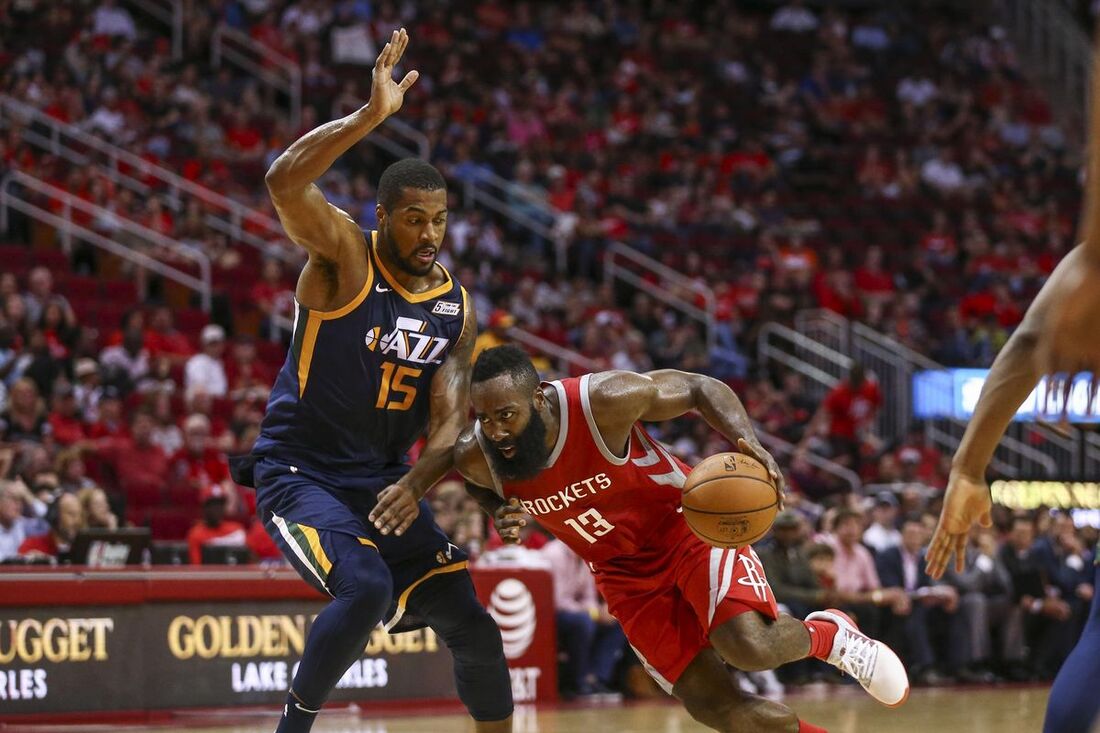
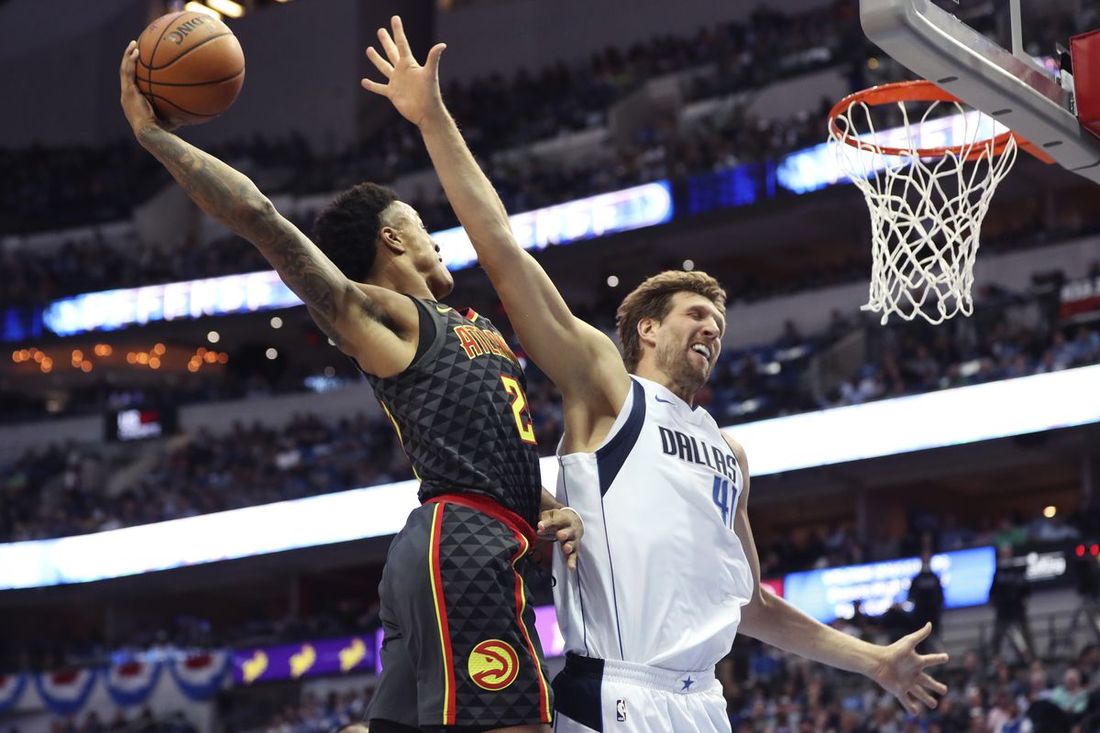
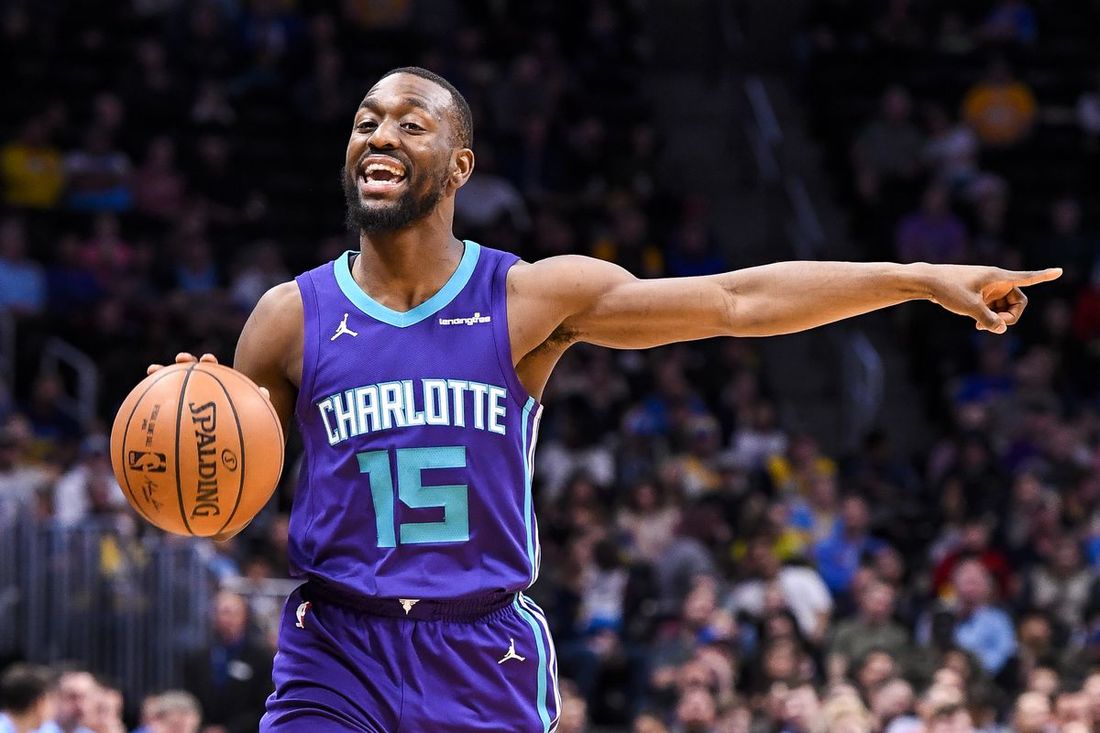
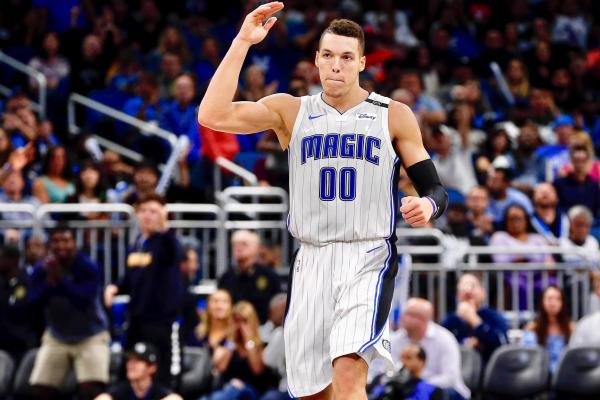
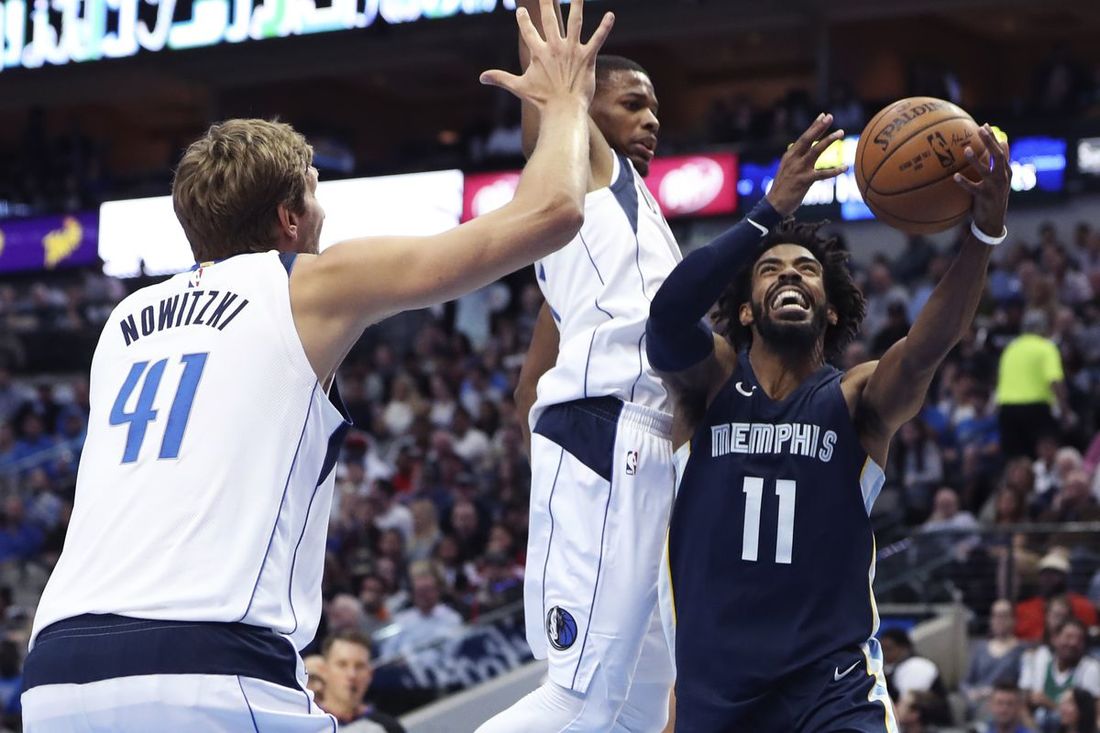
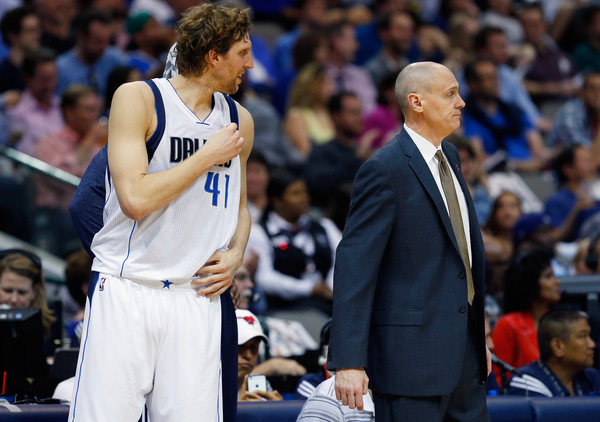
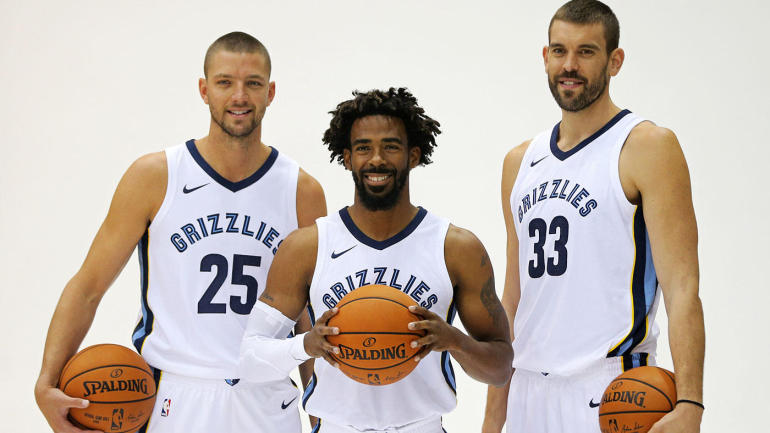
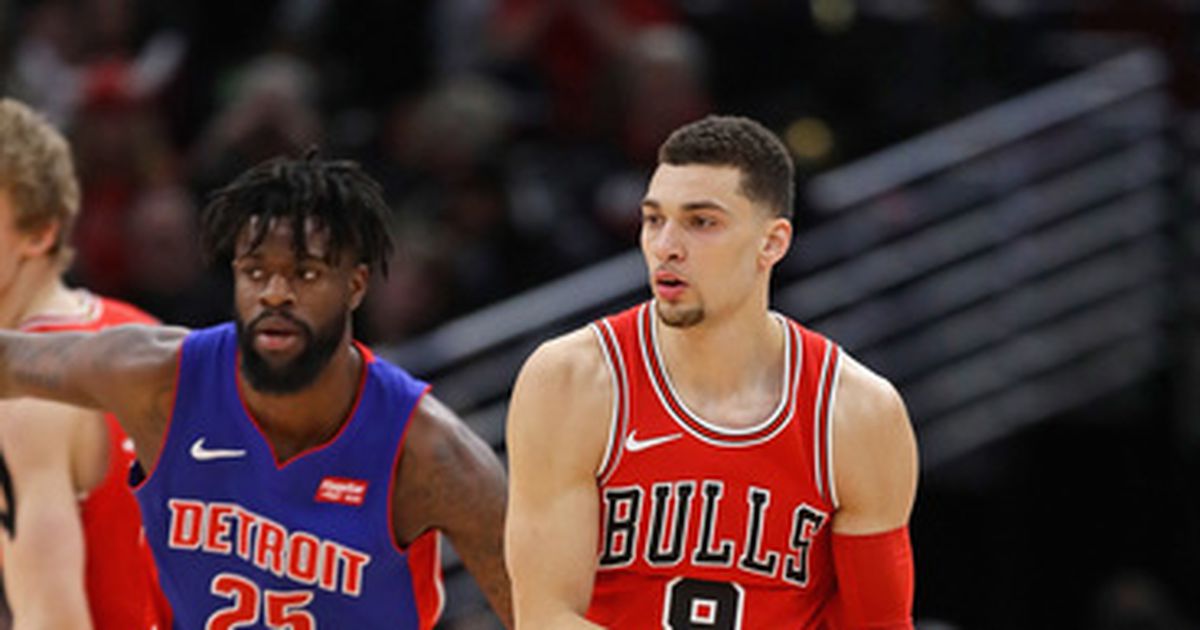
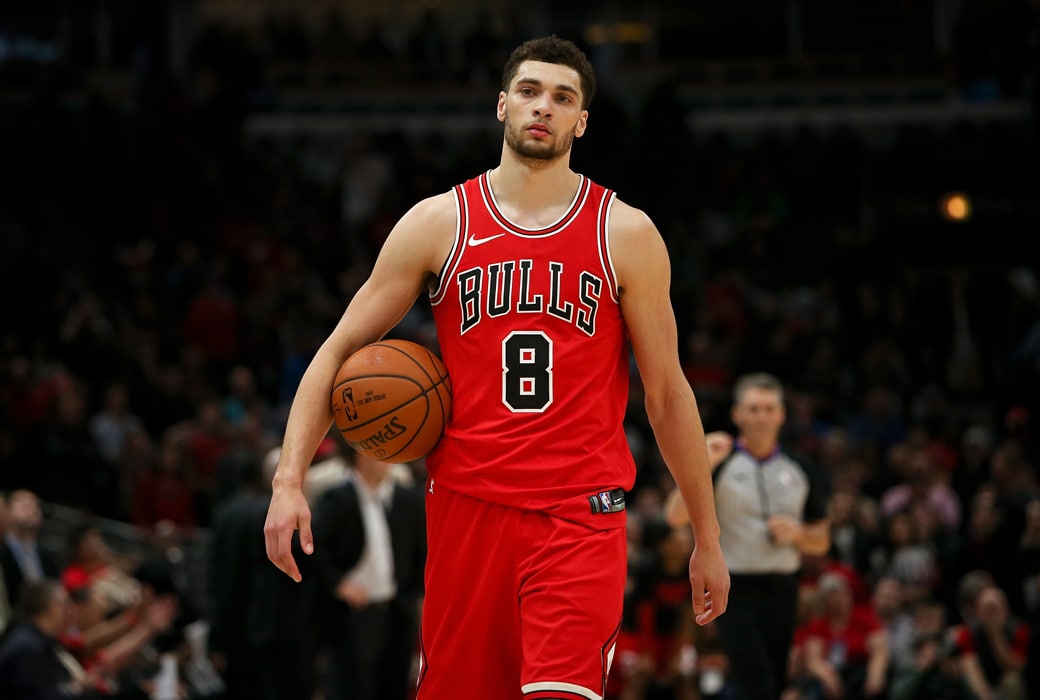
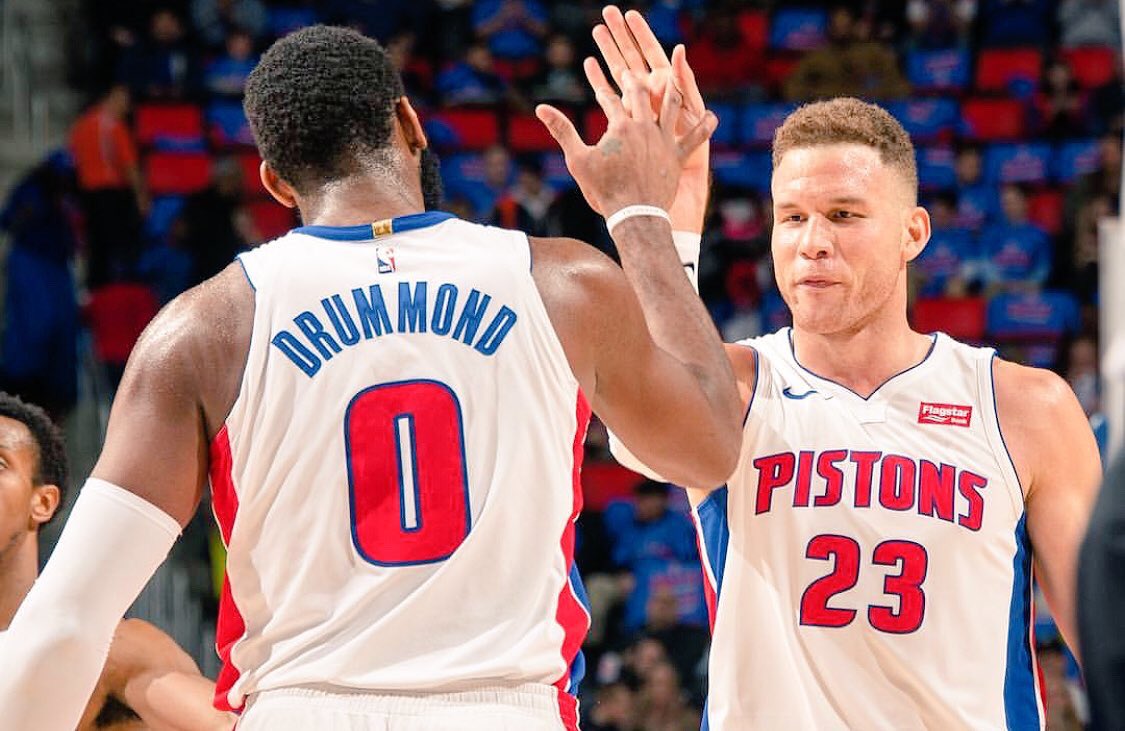
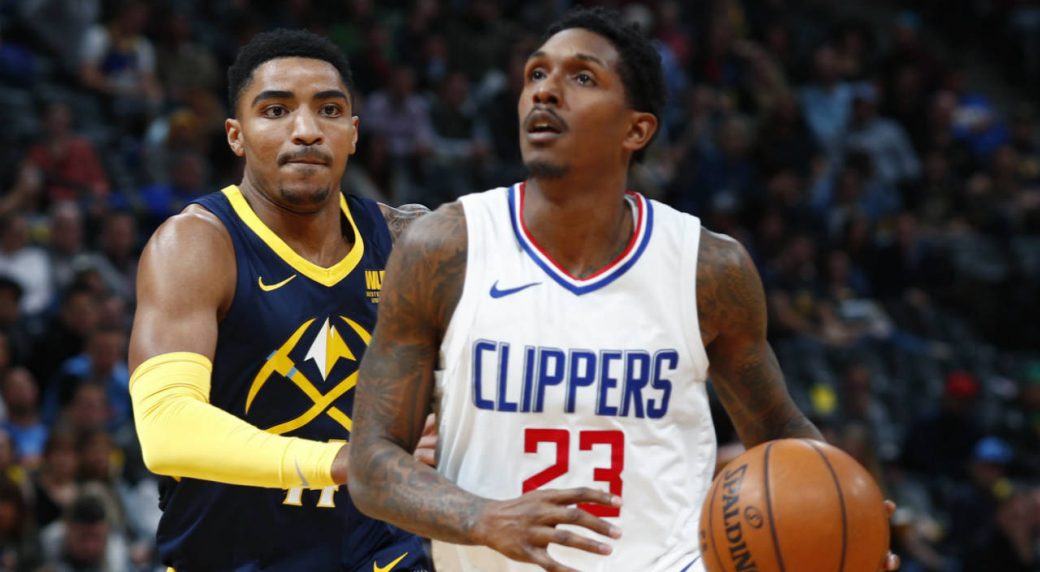
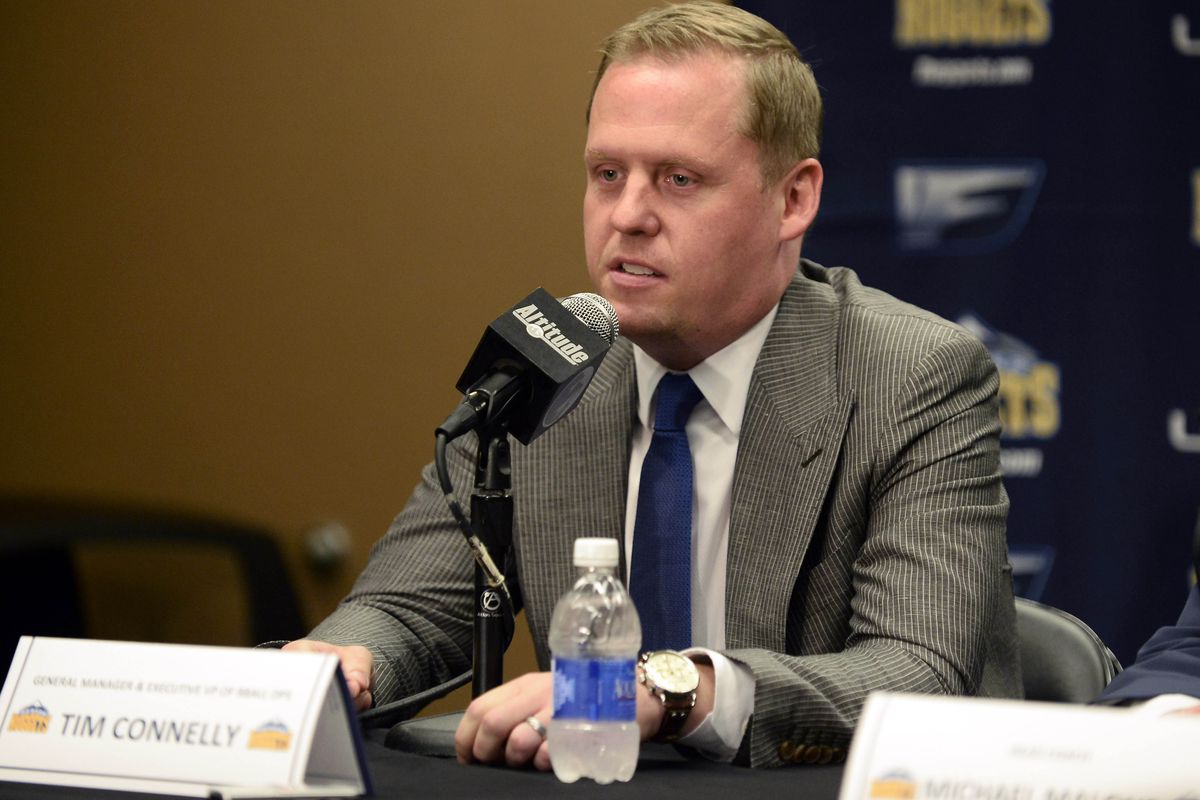
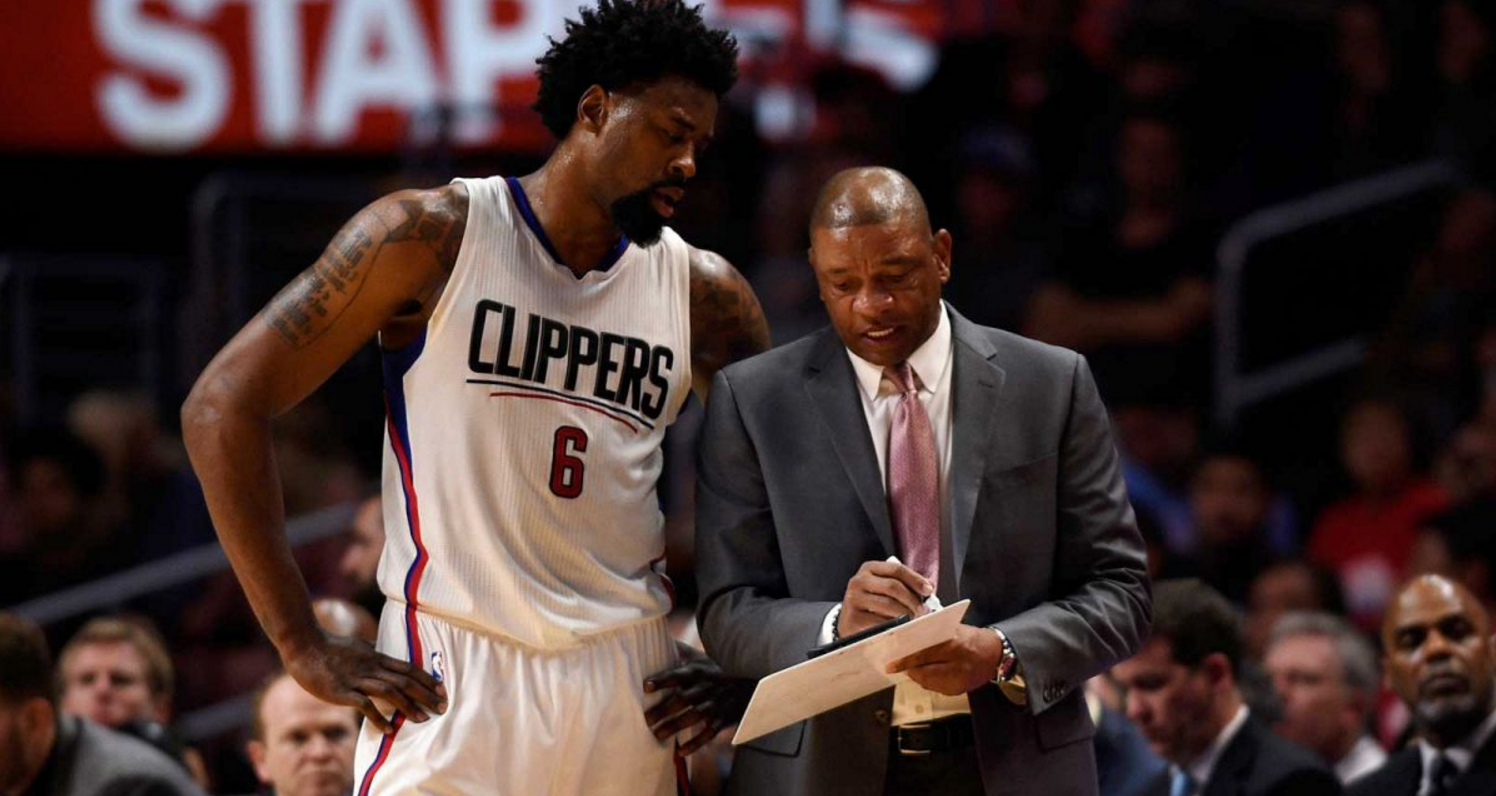
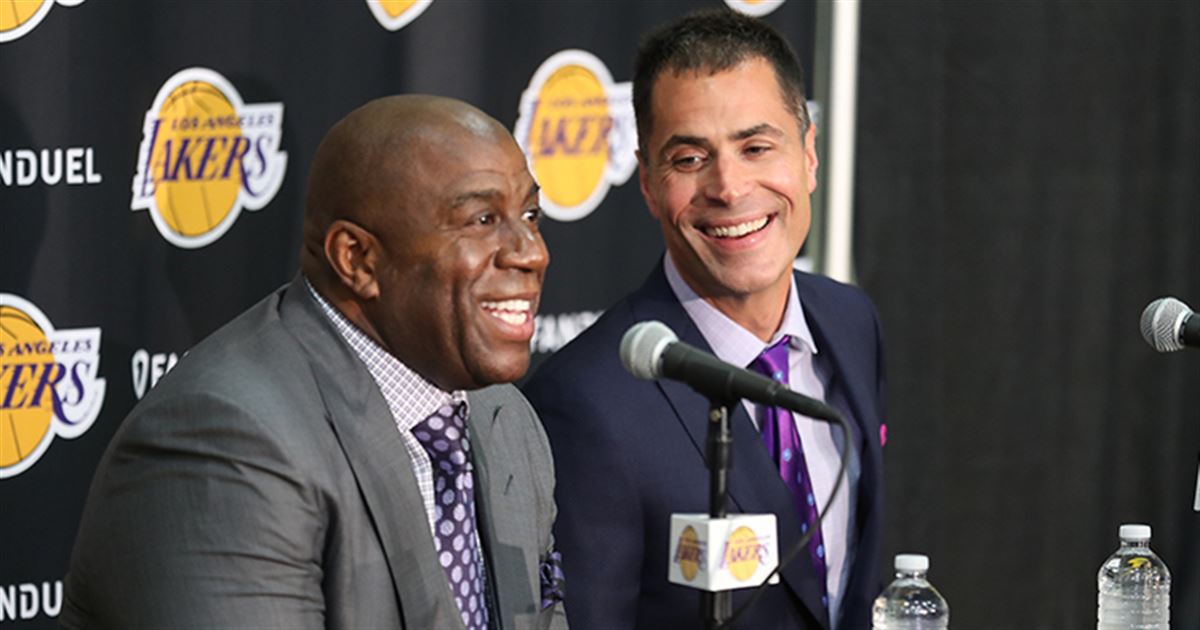
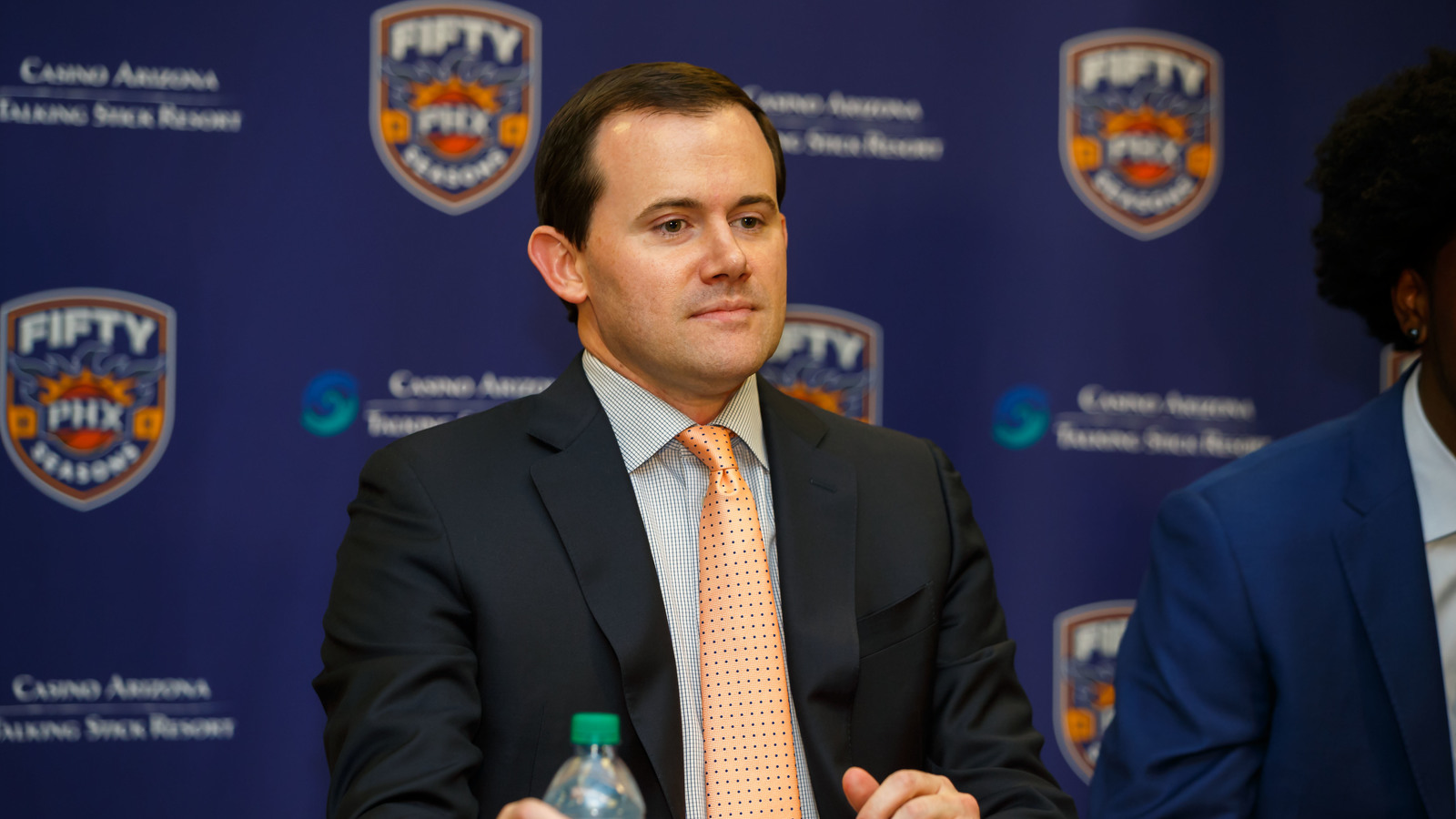
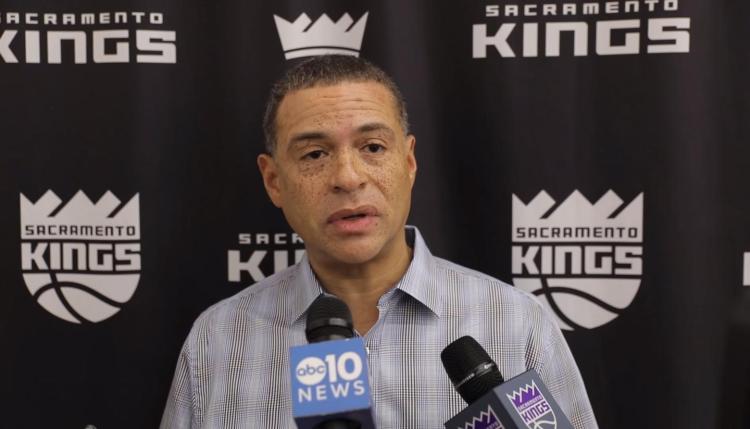
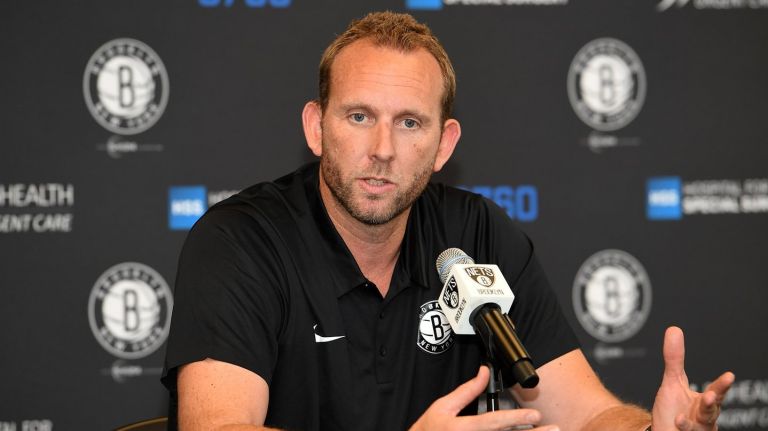
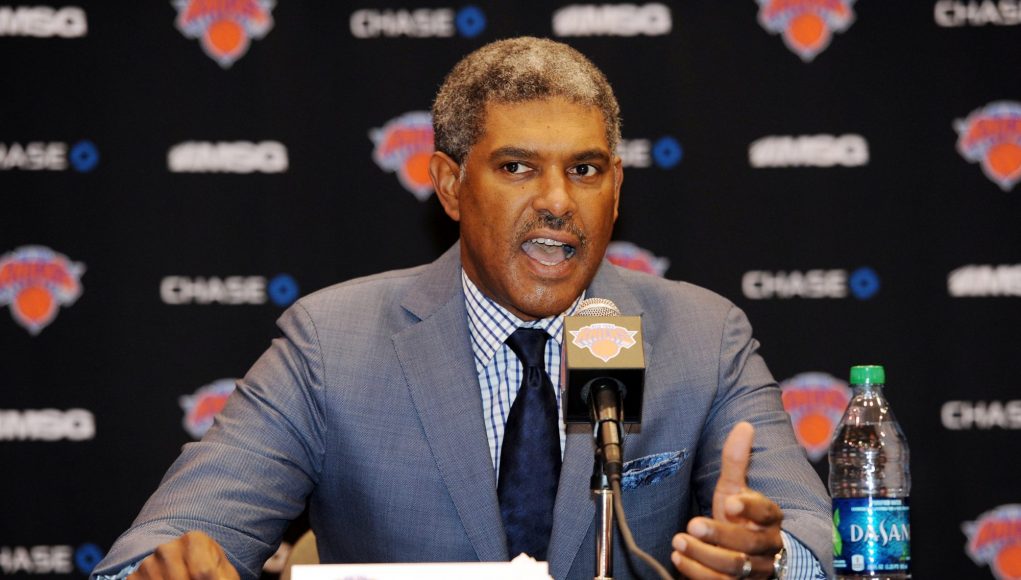
 RSS Feed
RSS Feed
